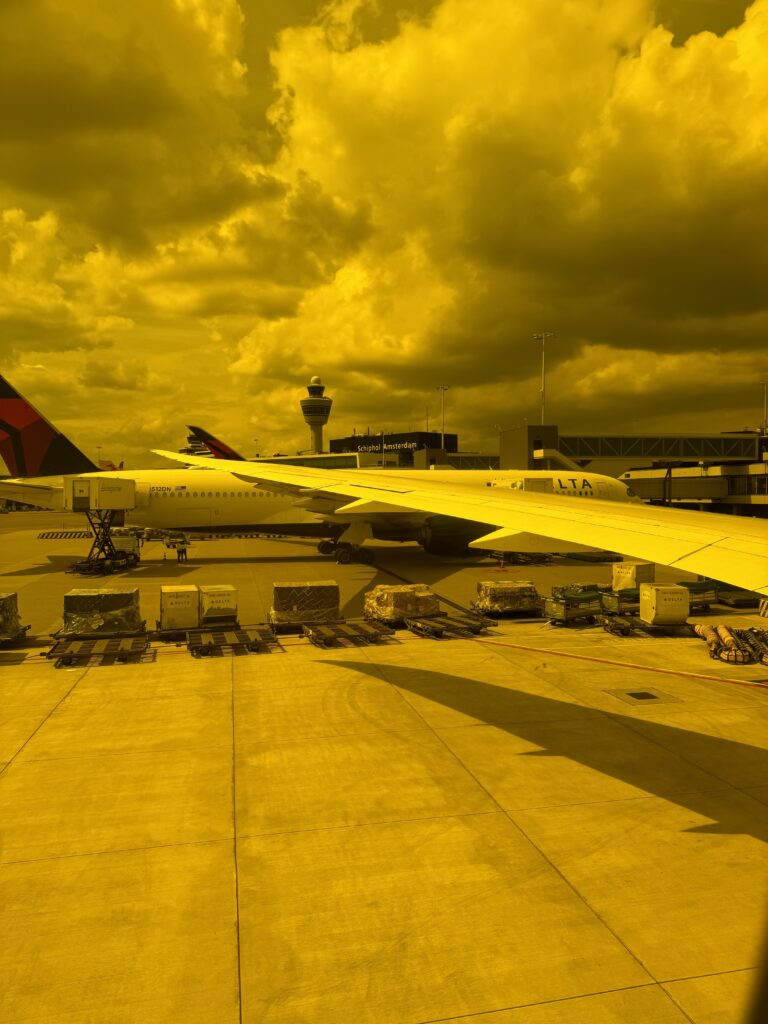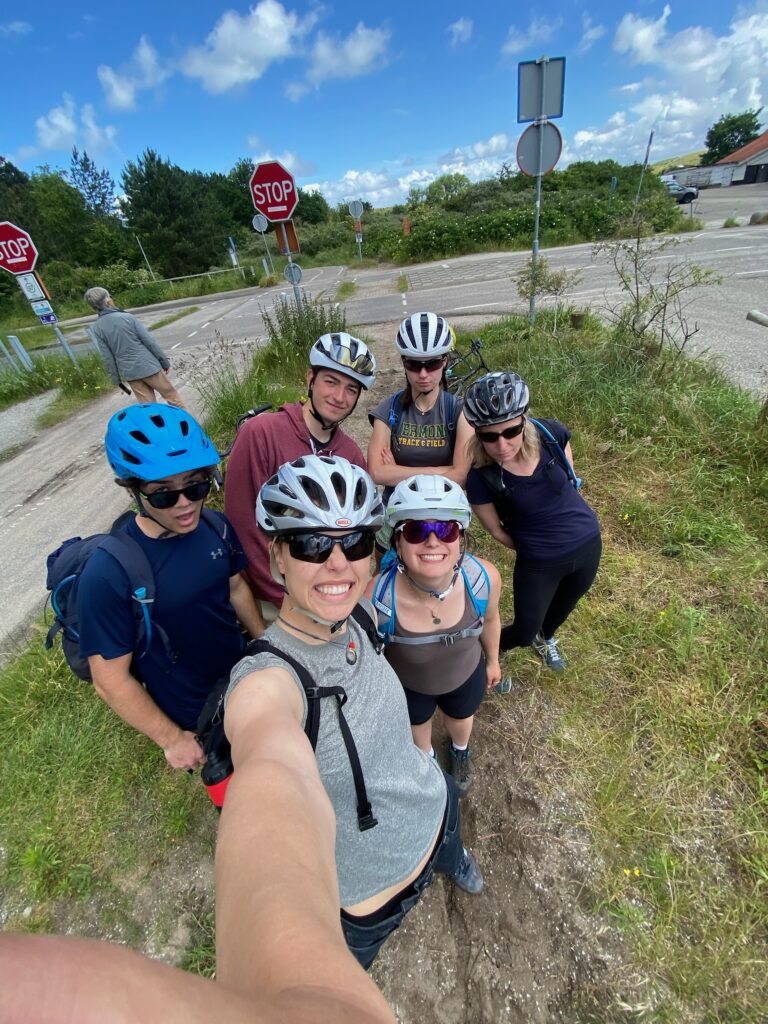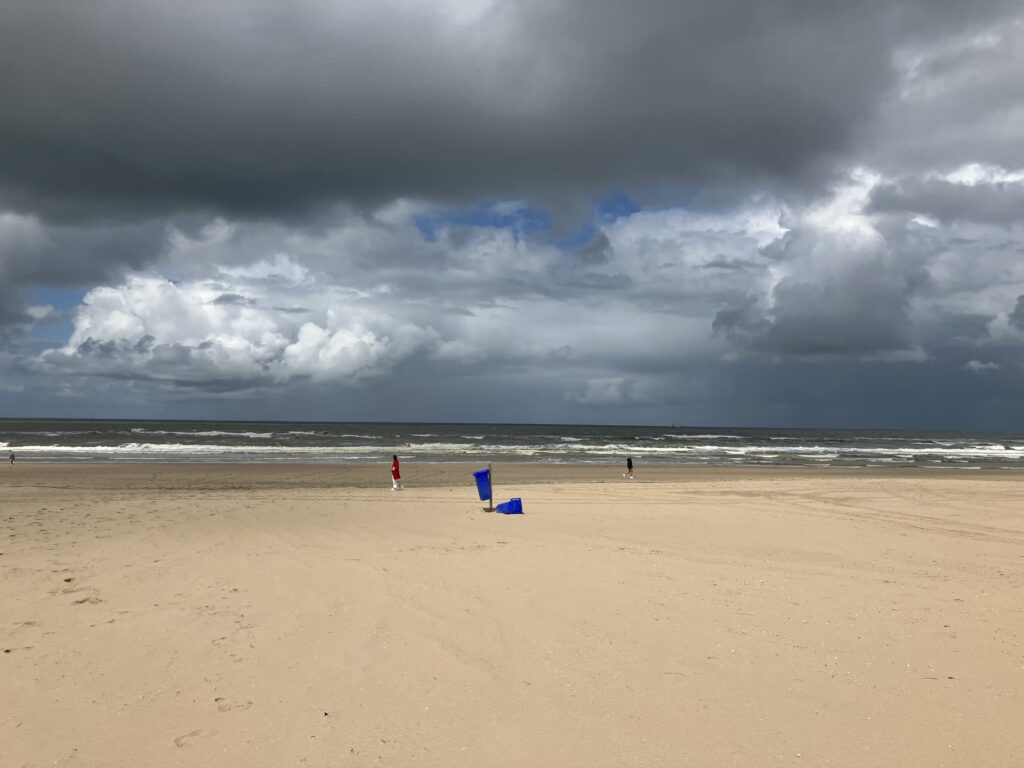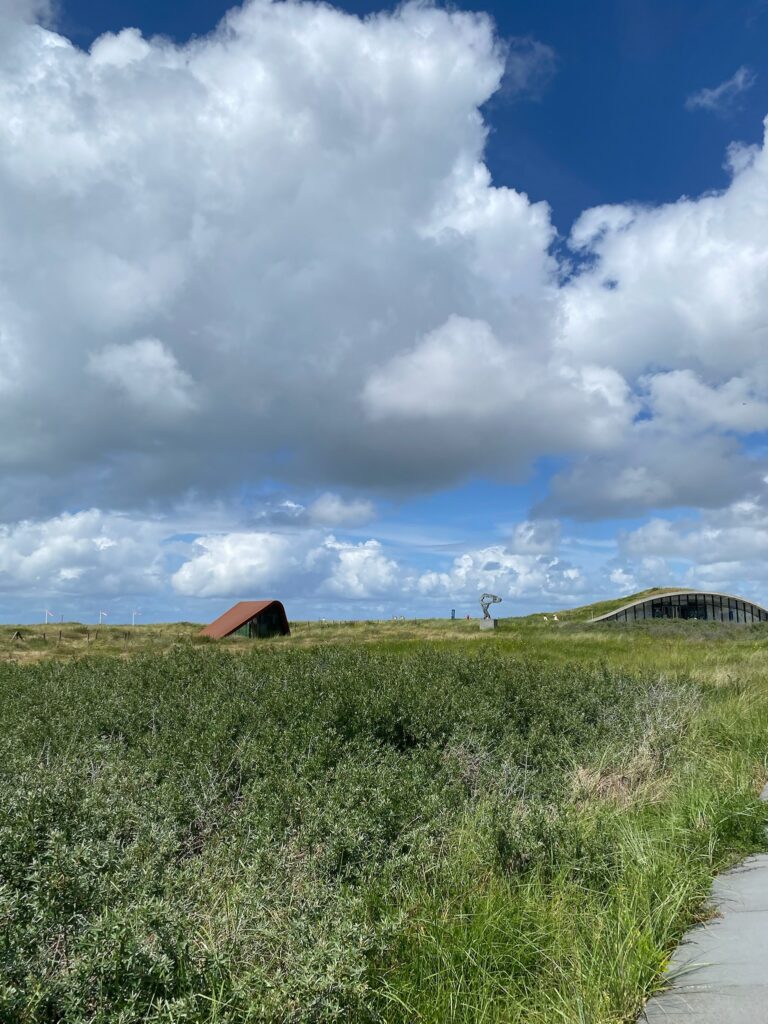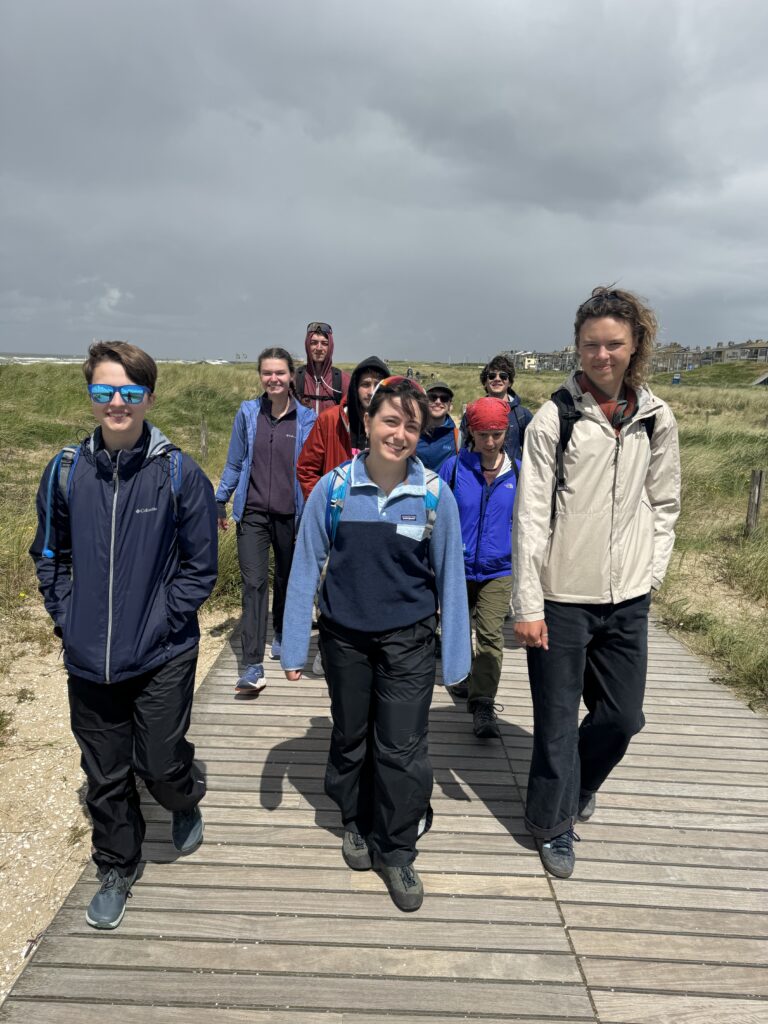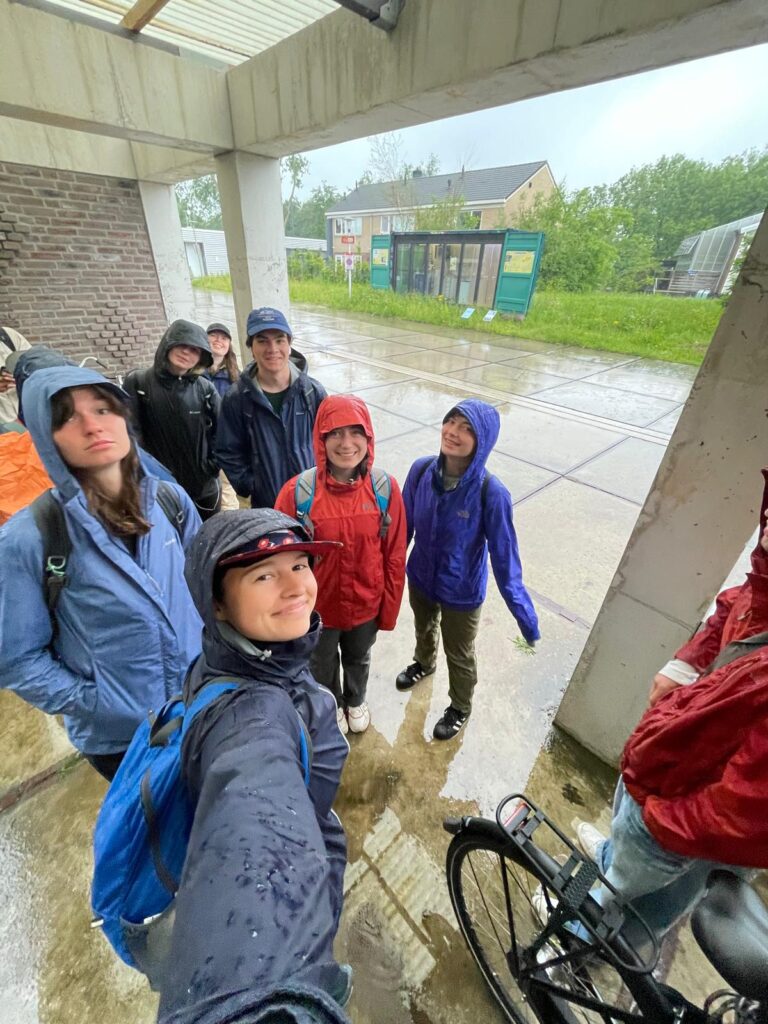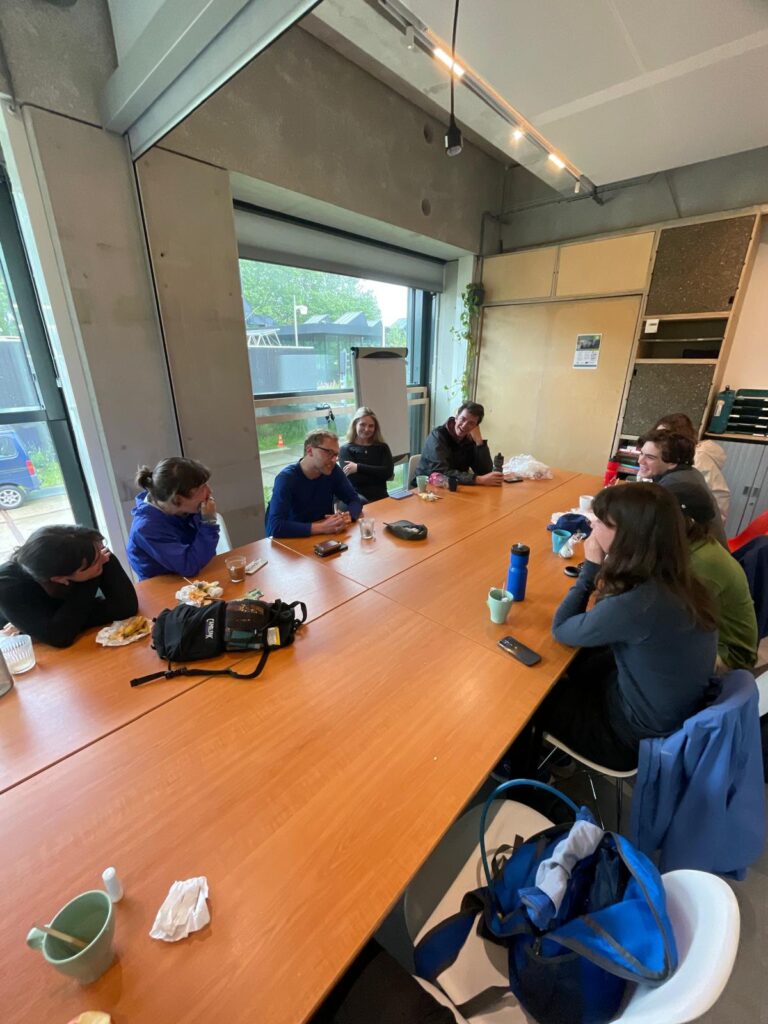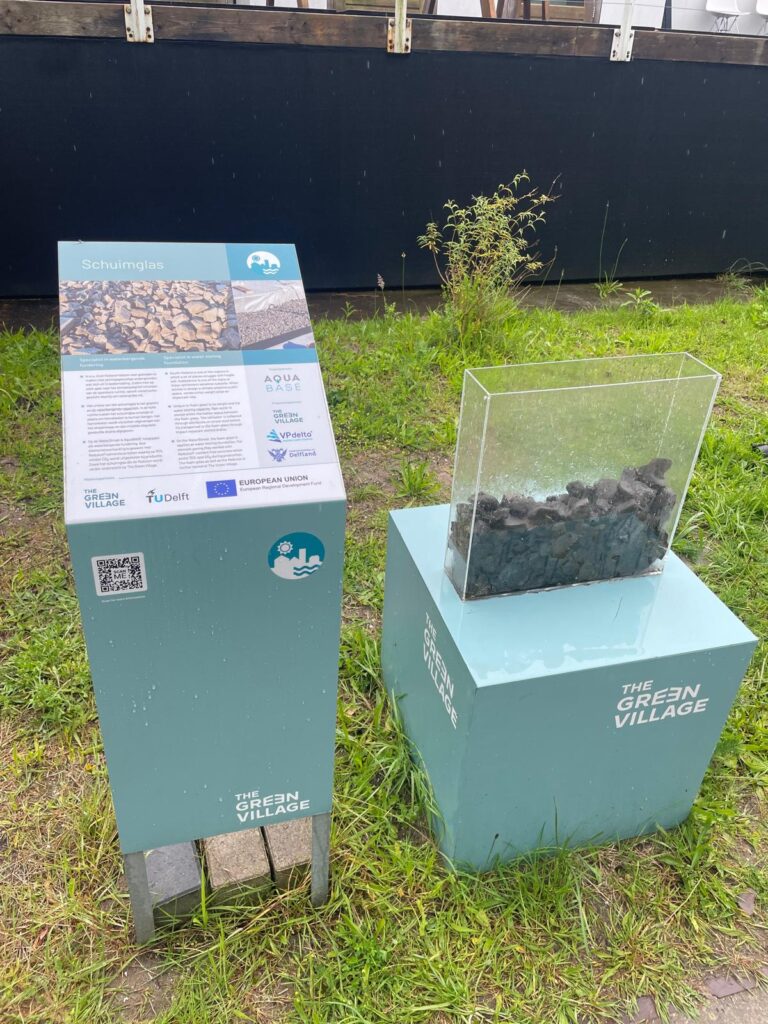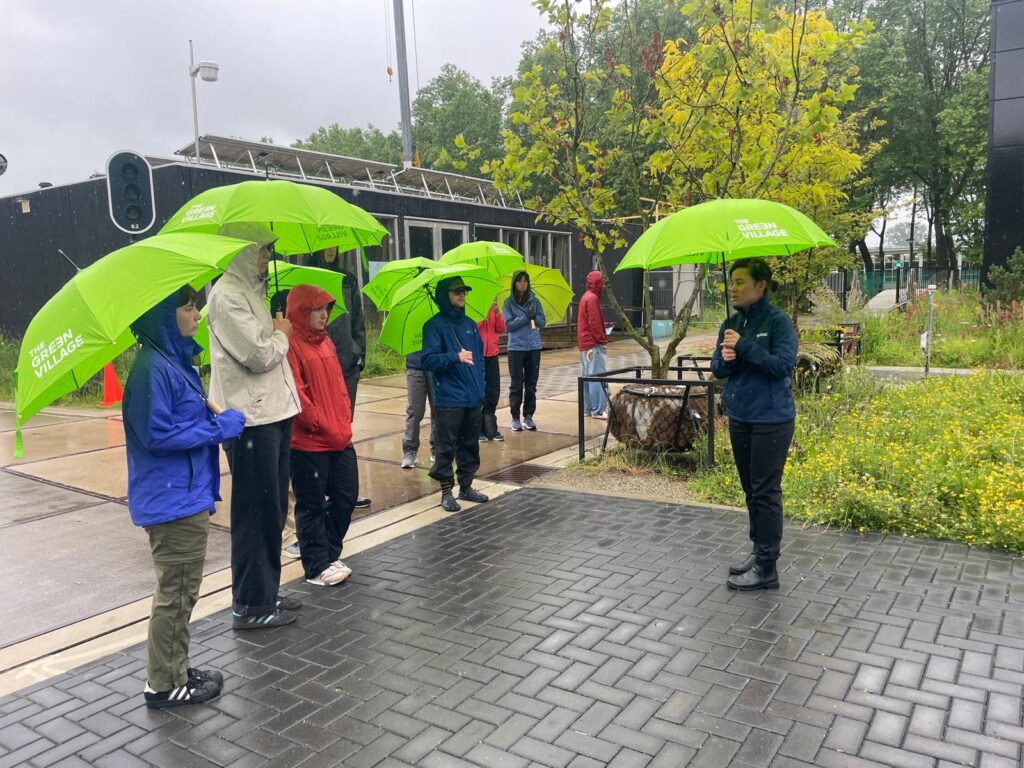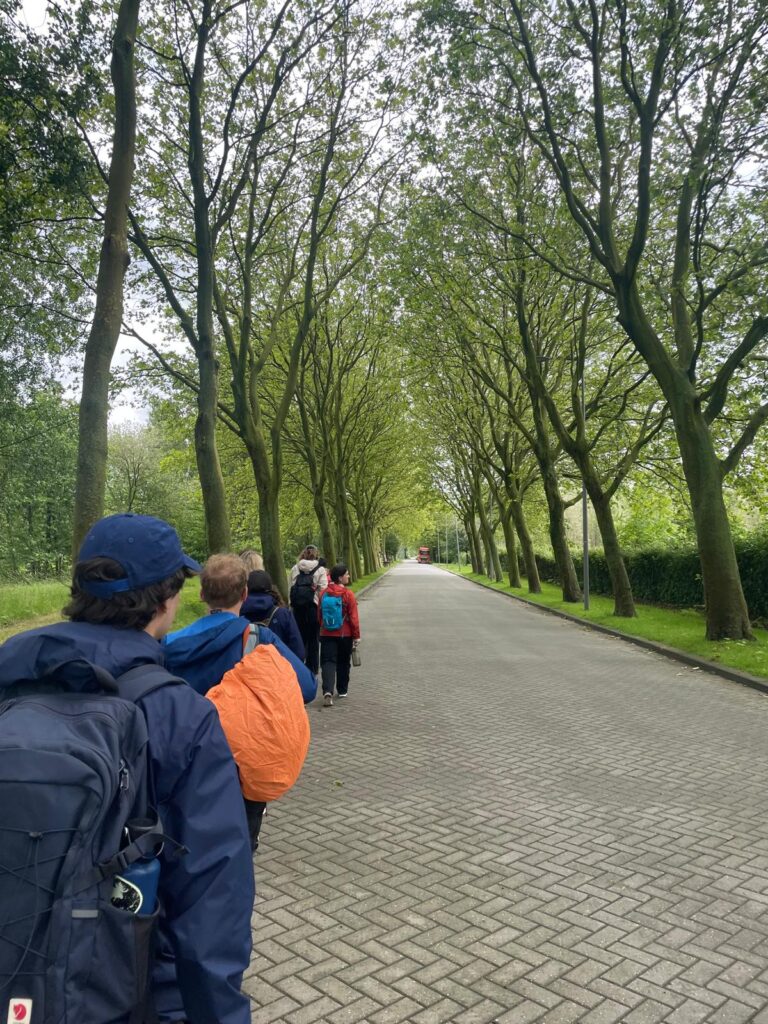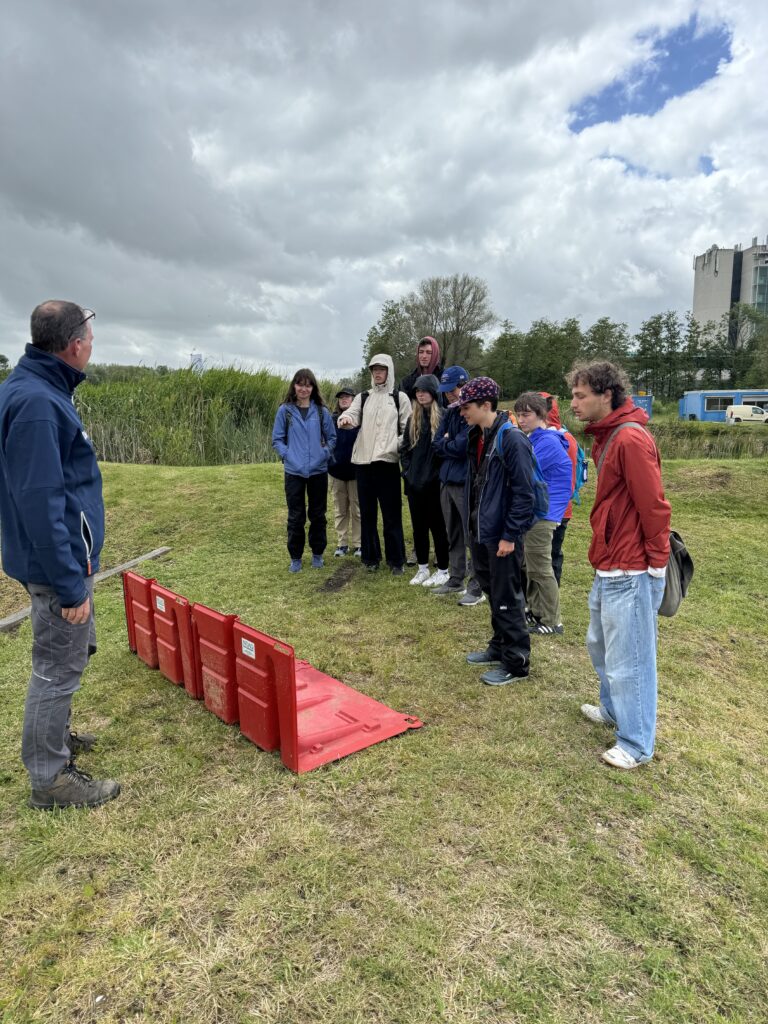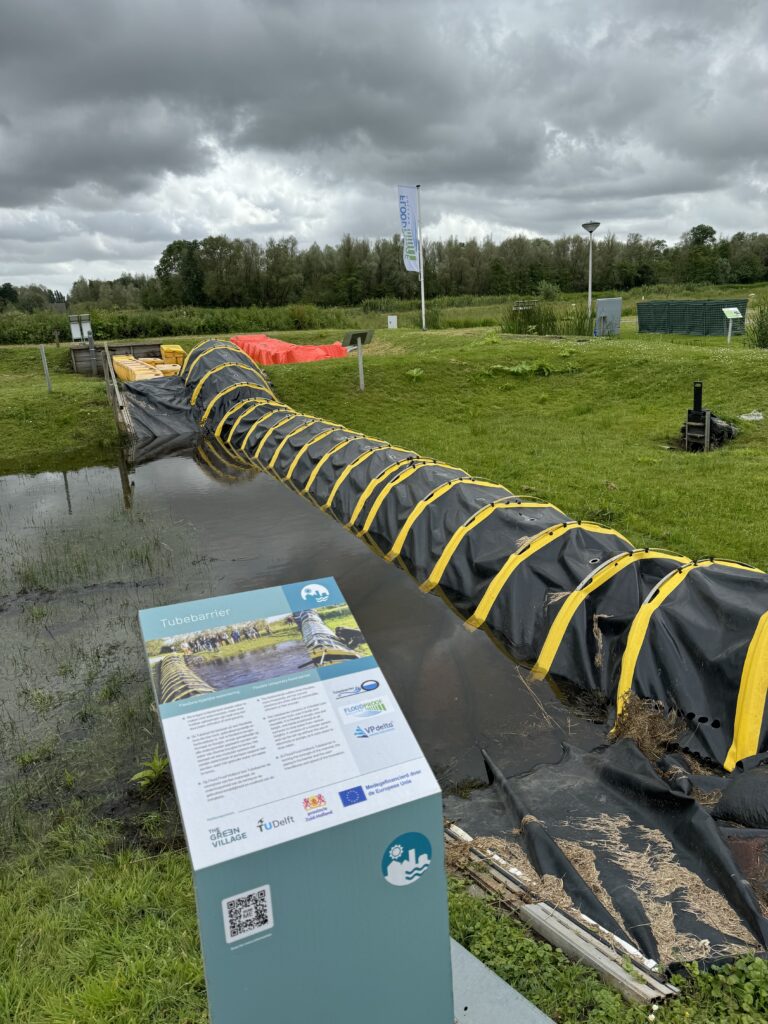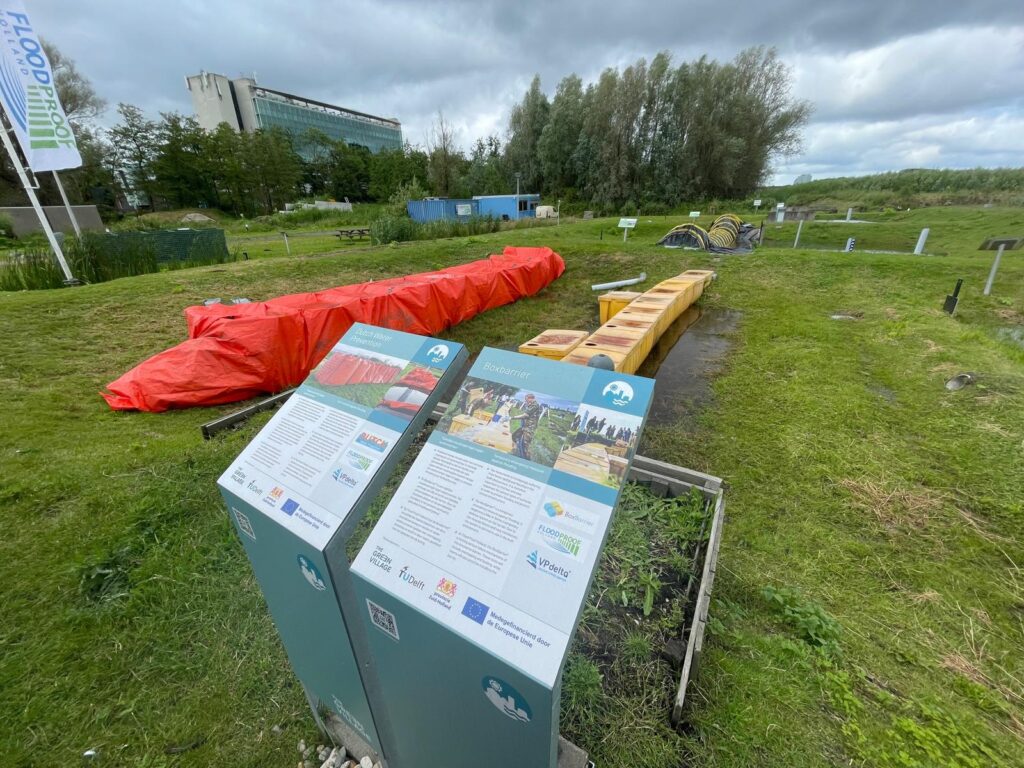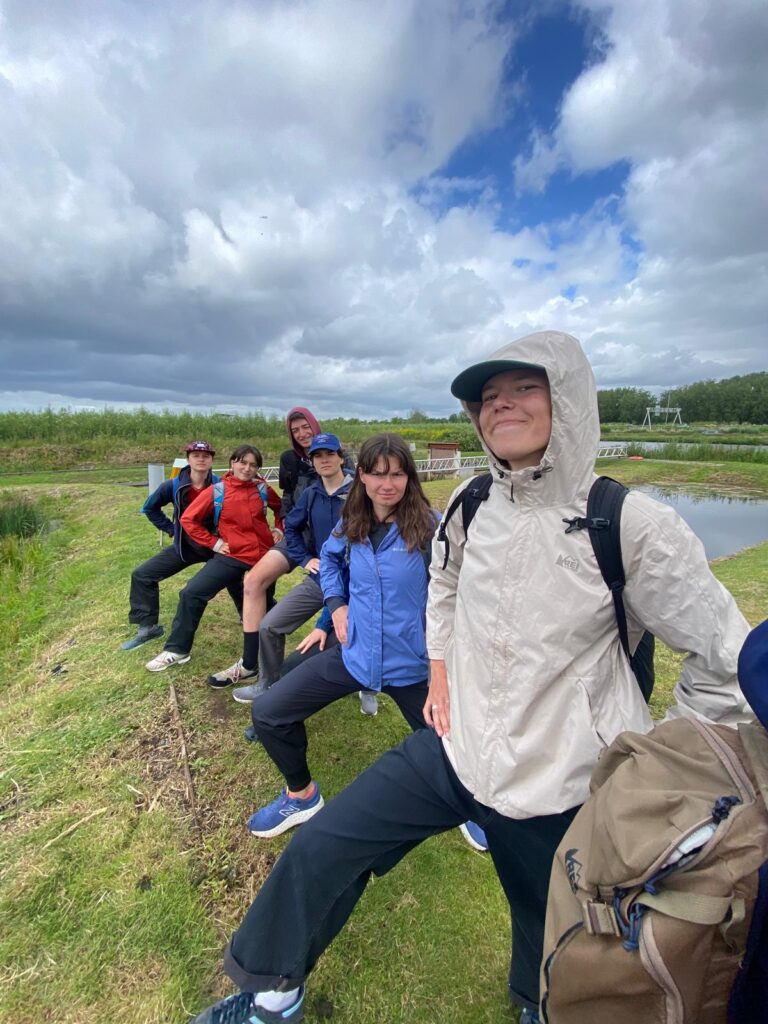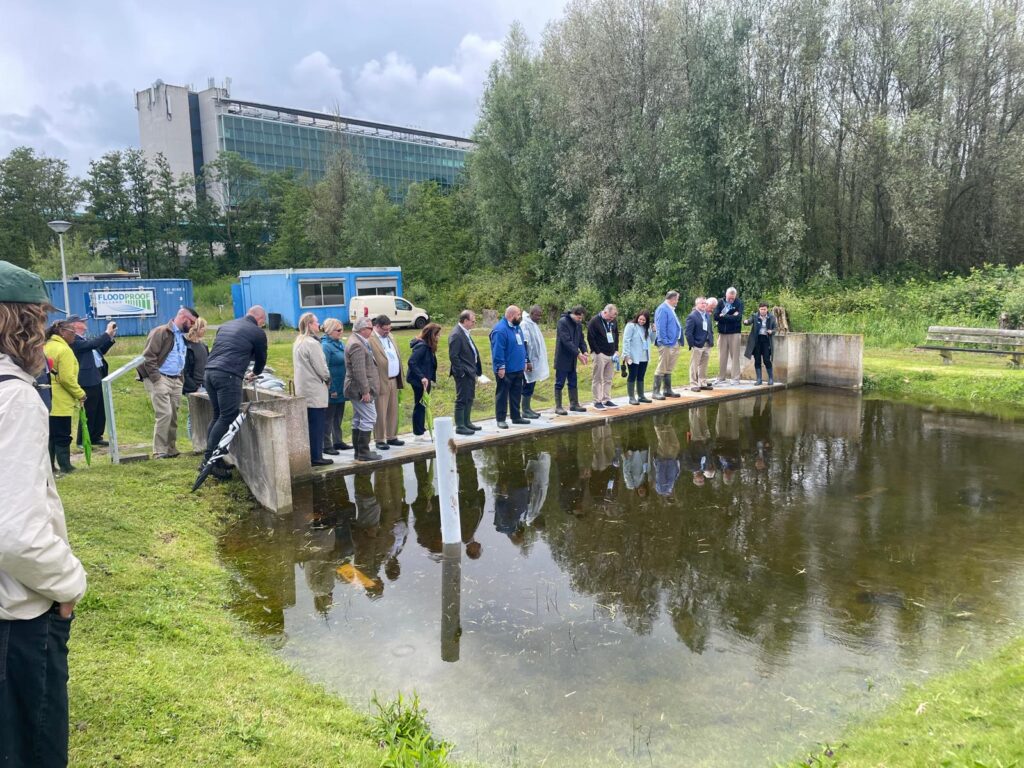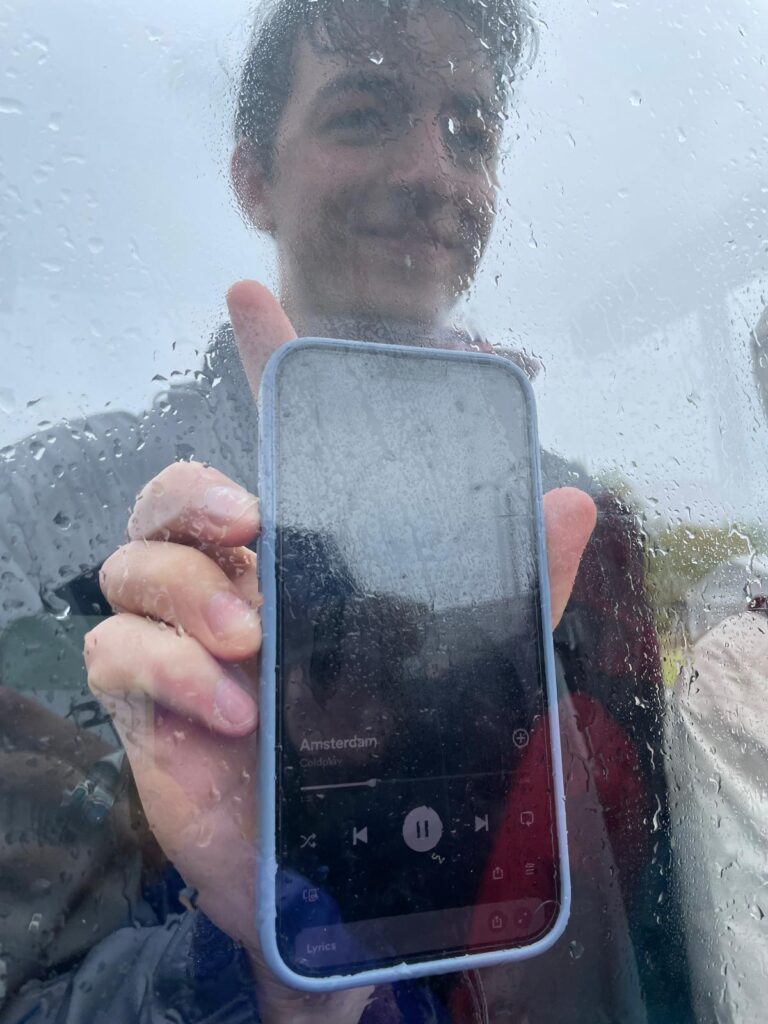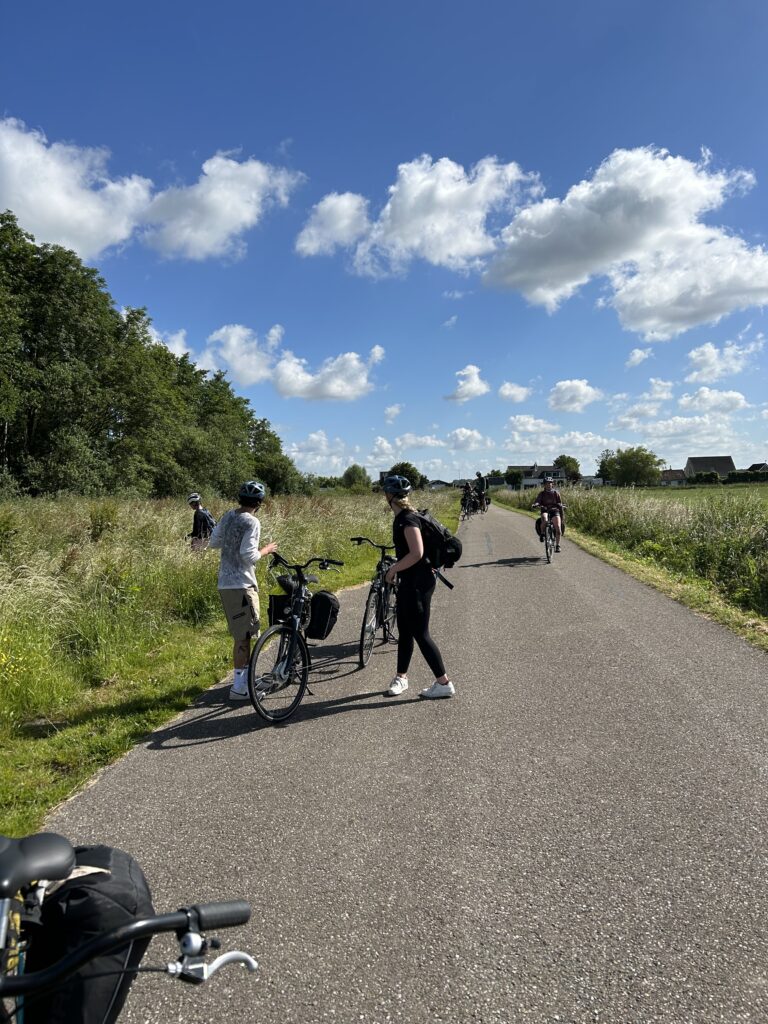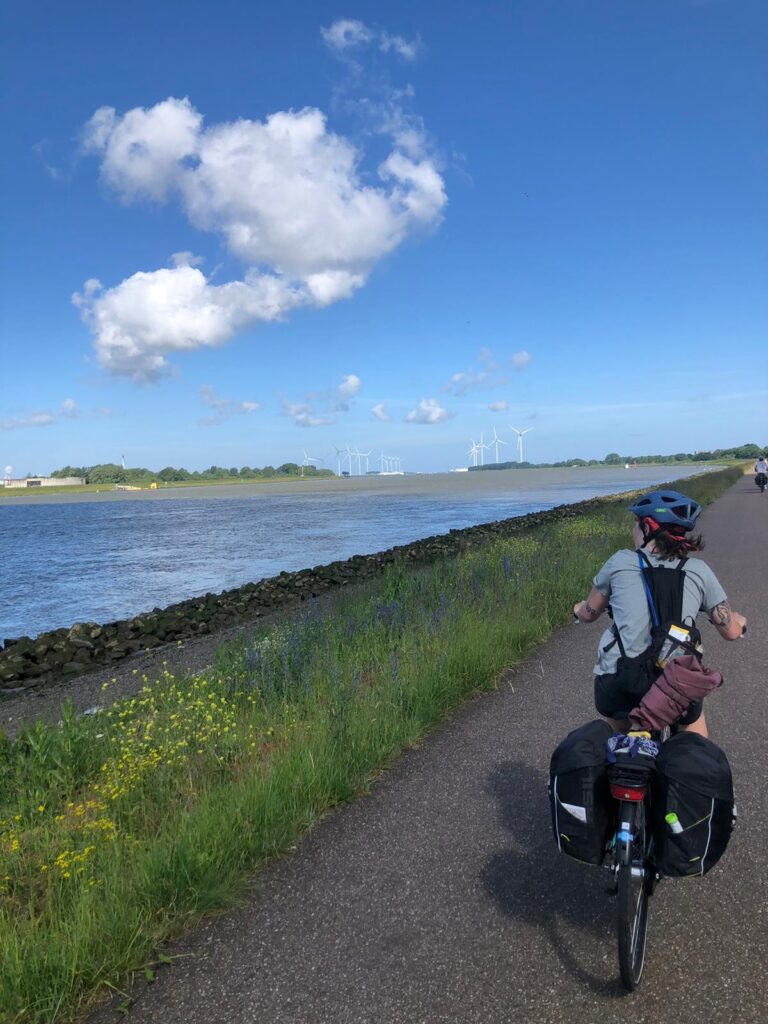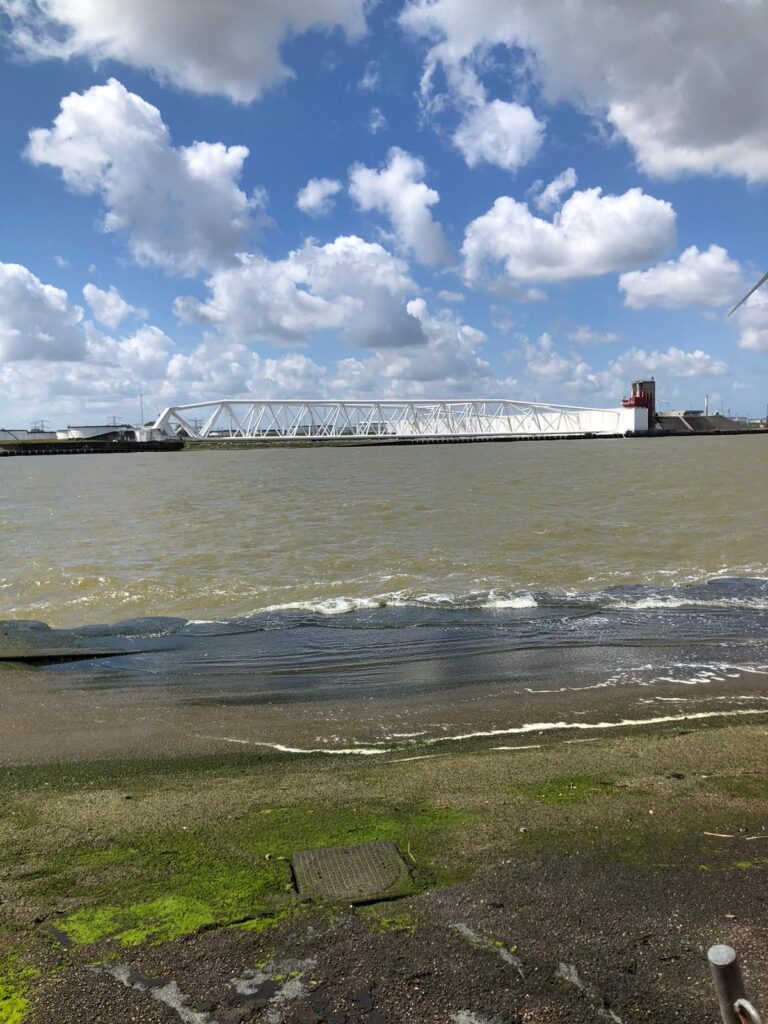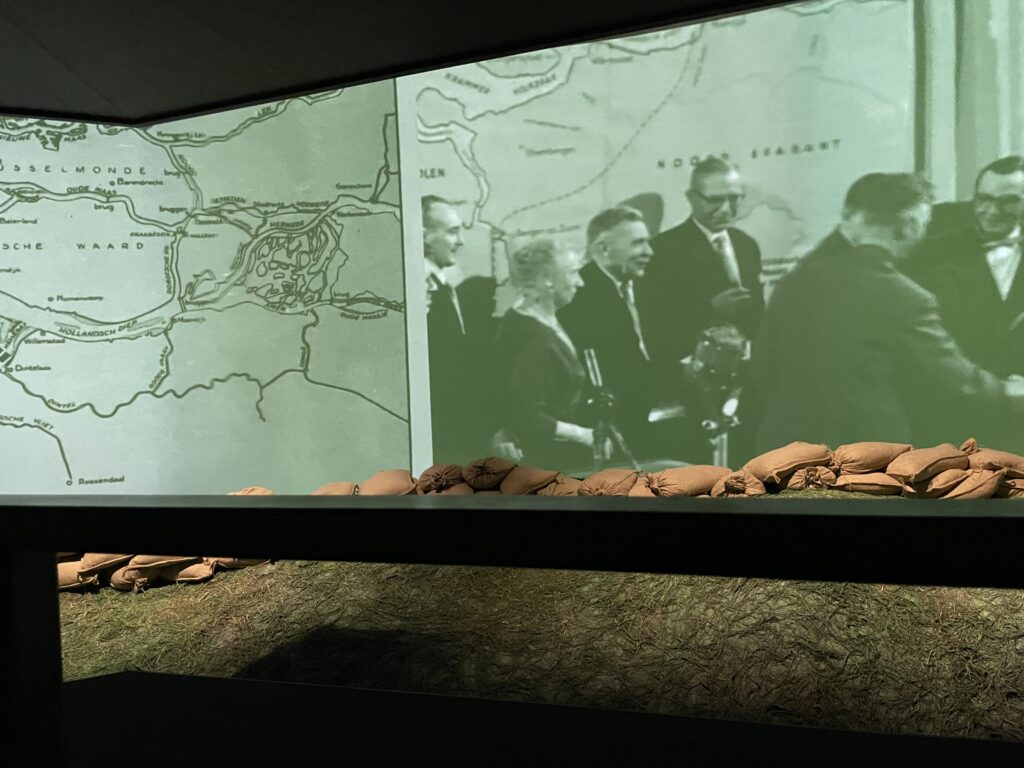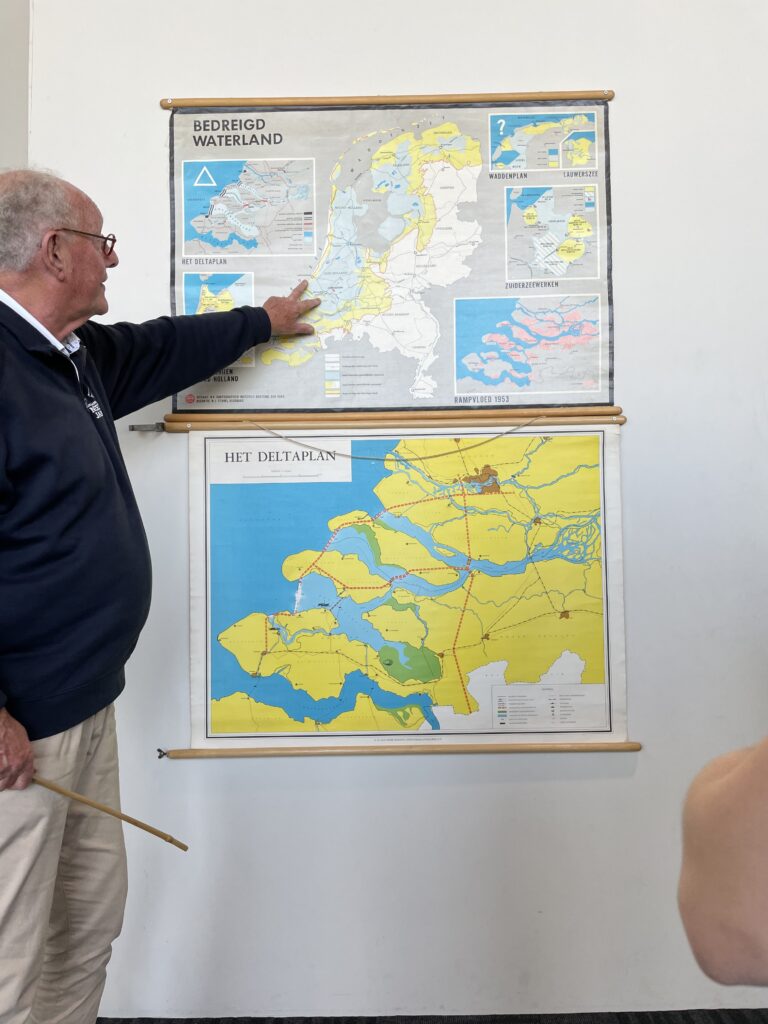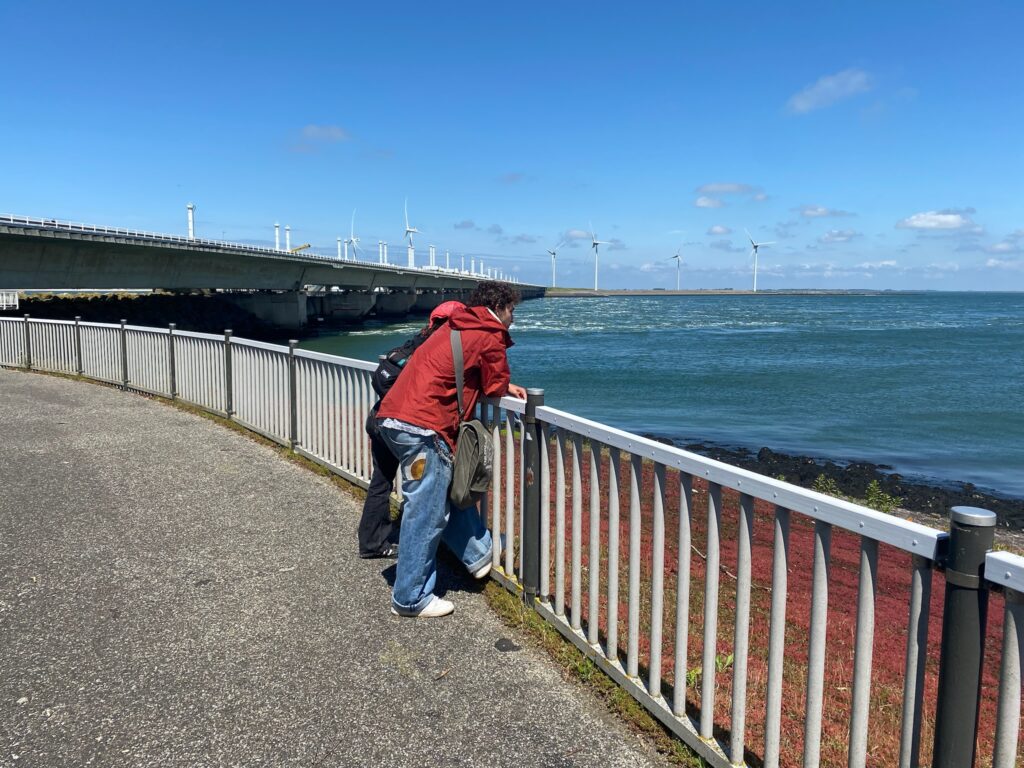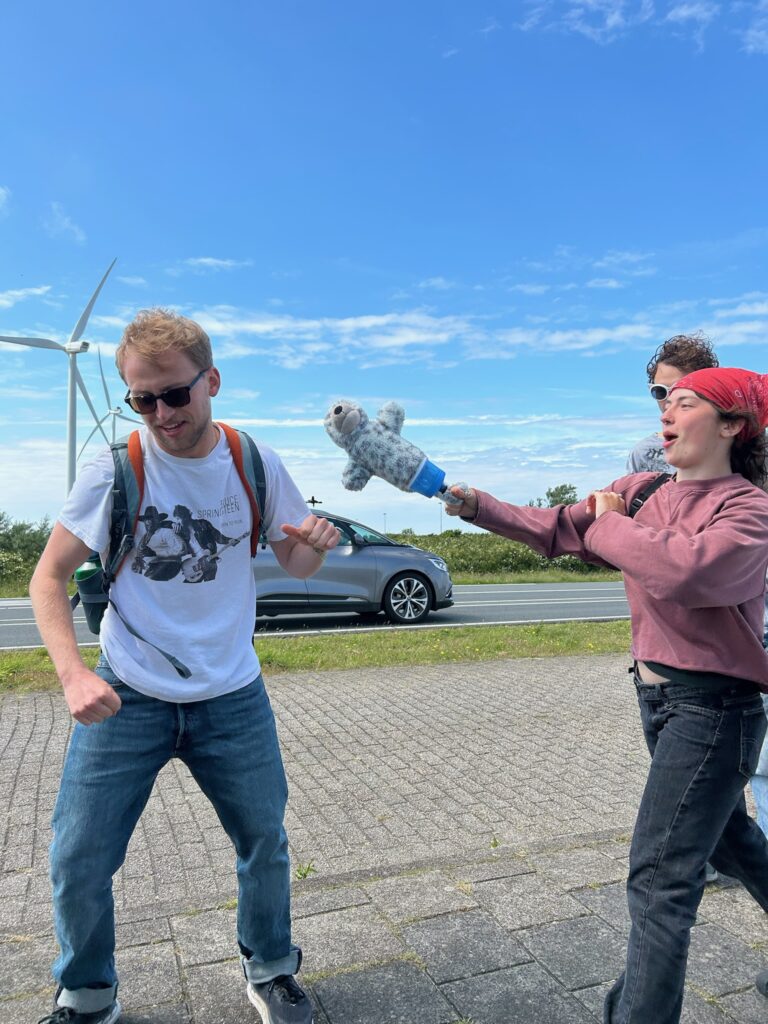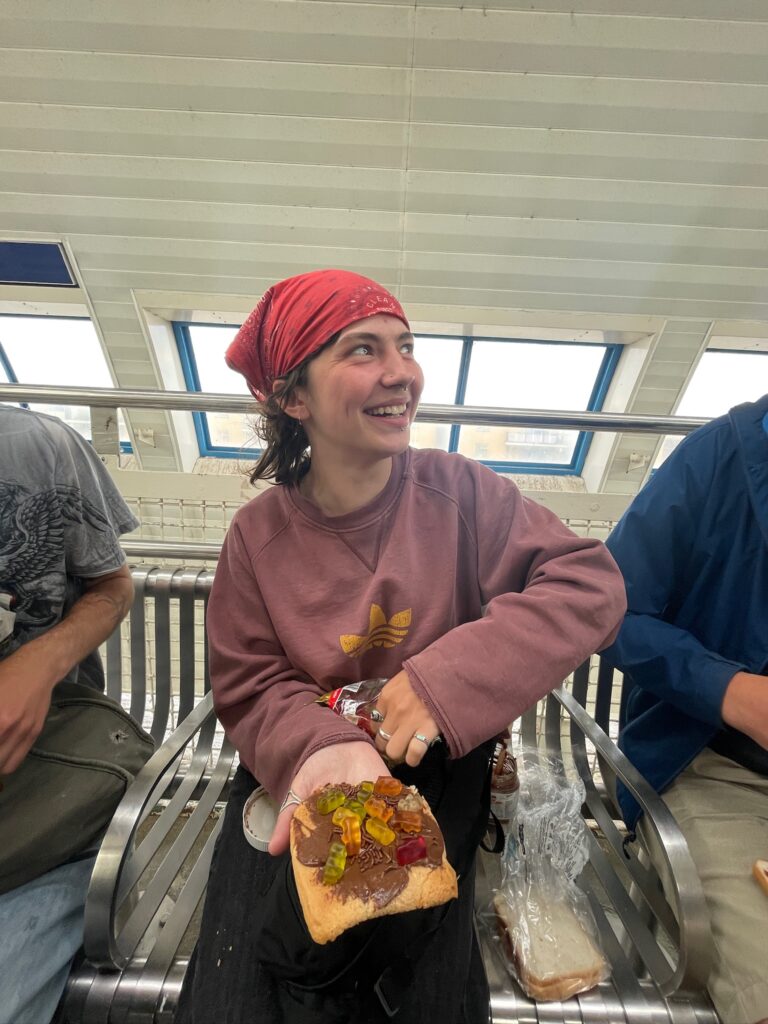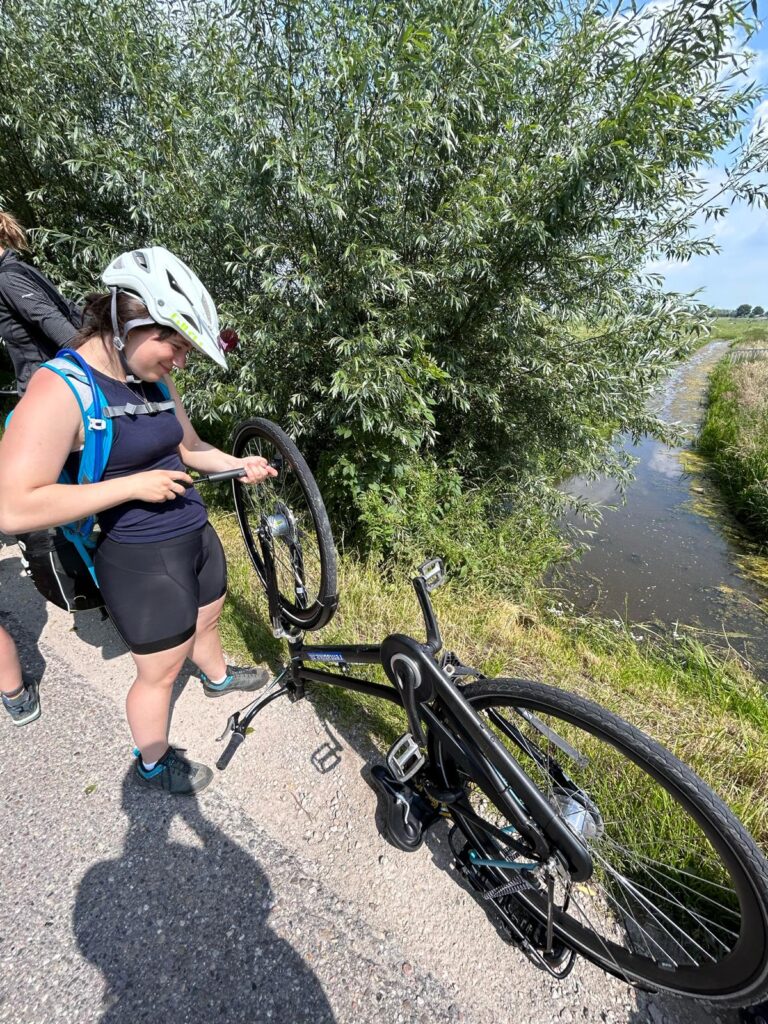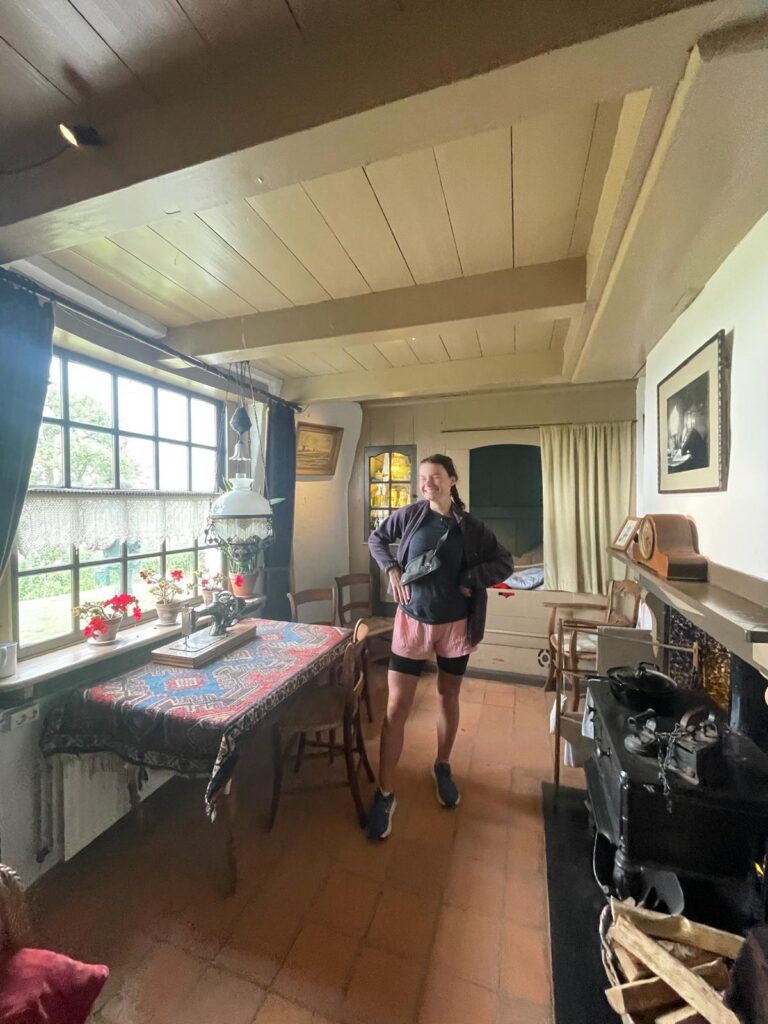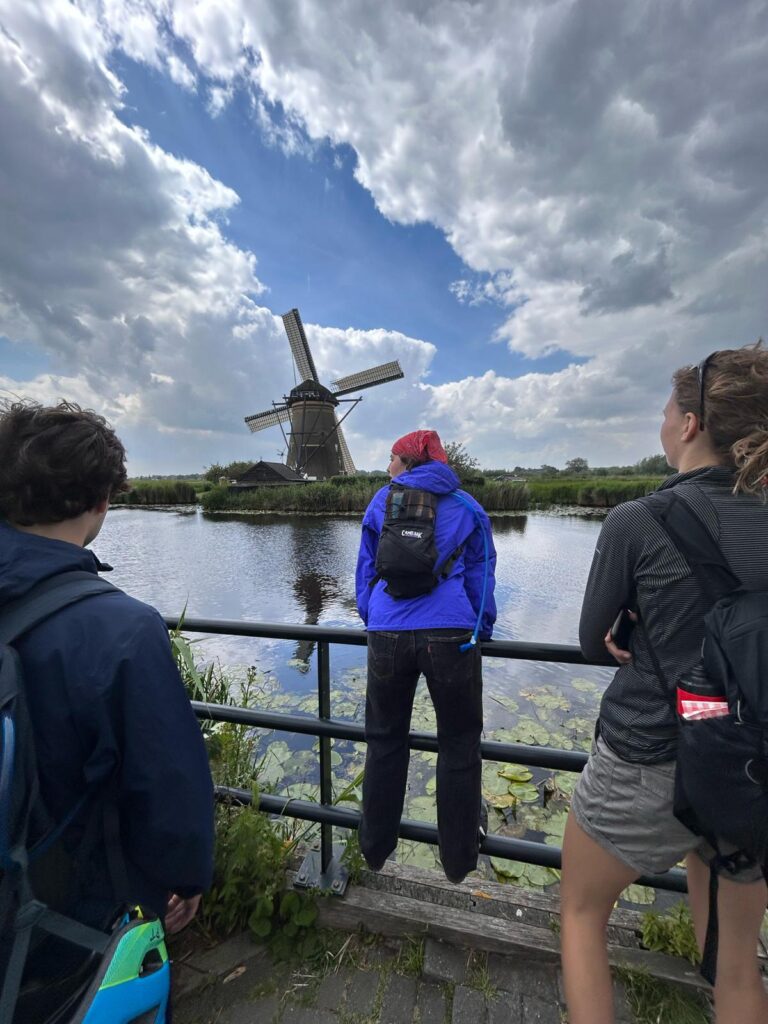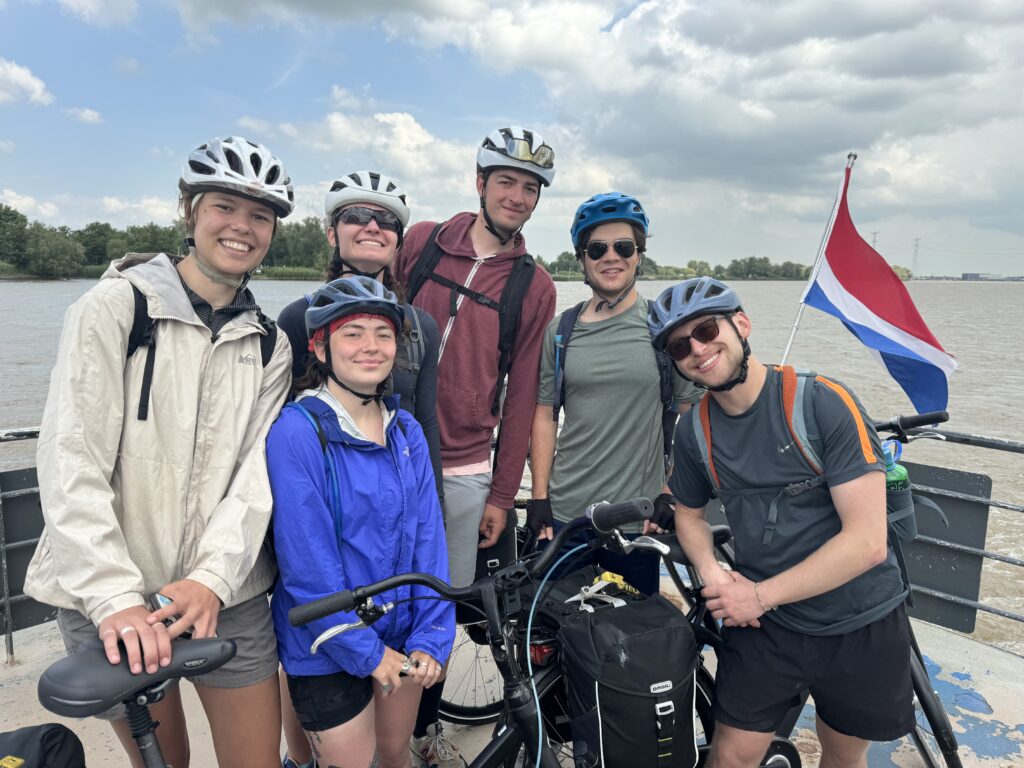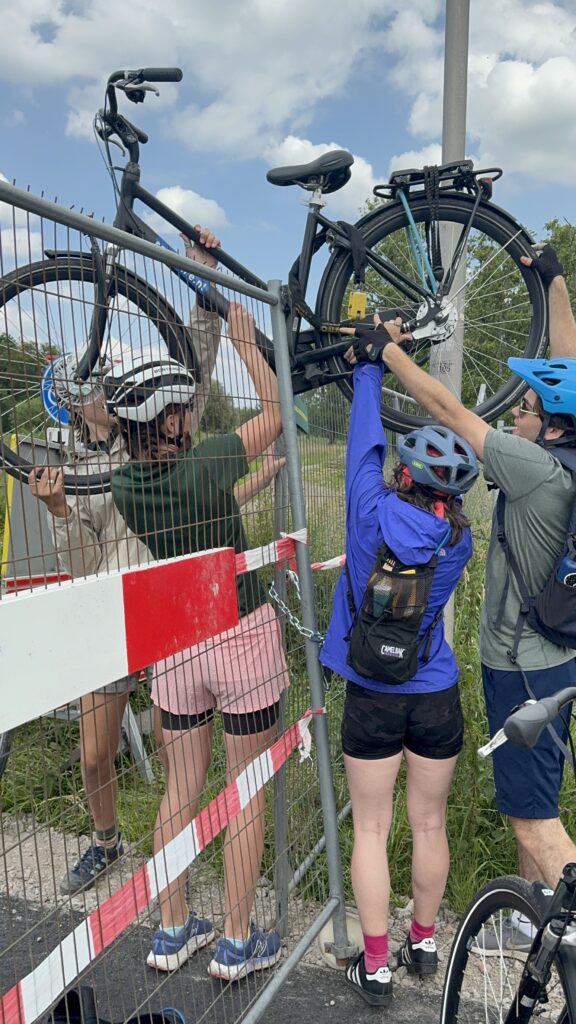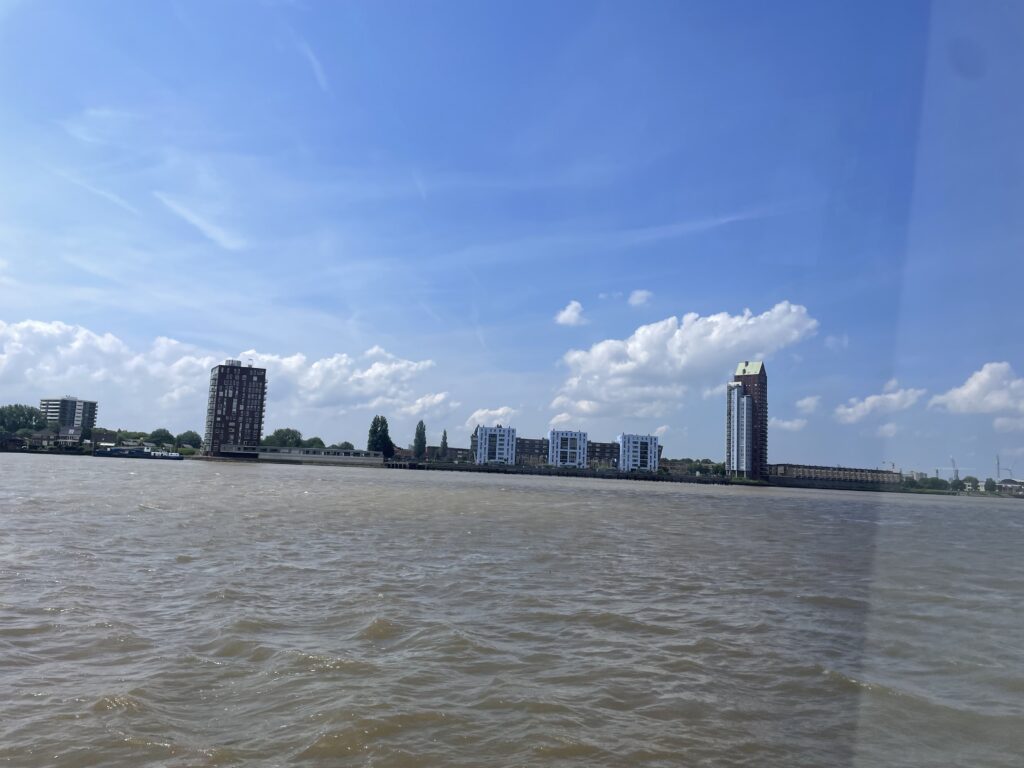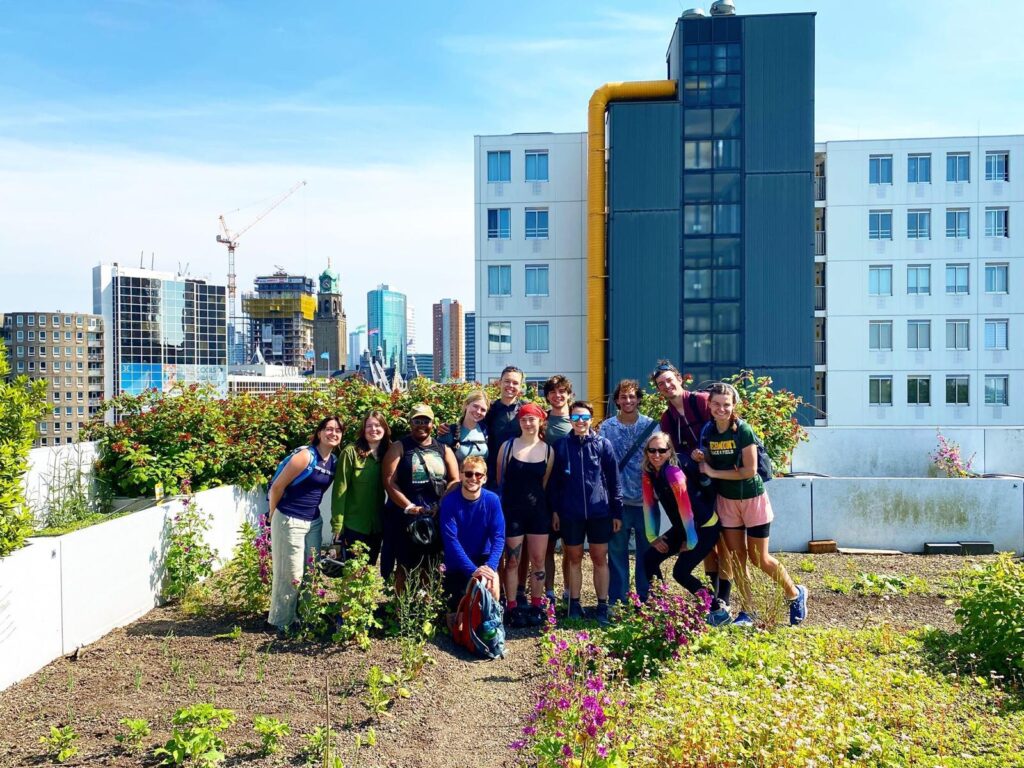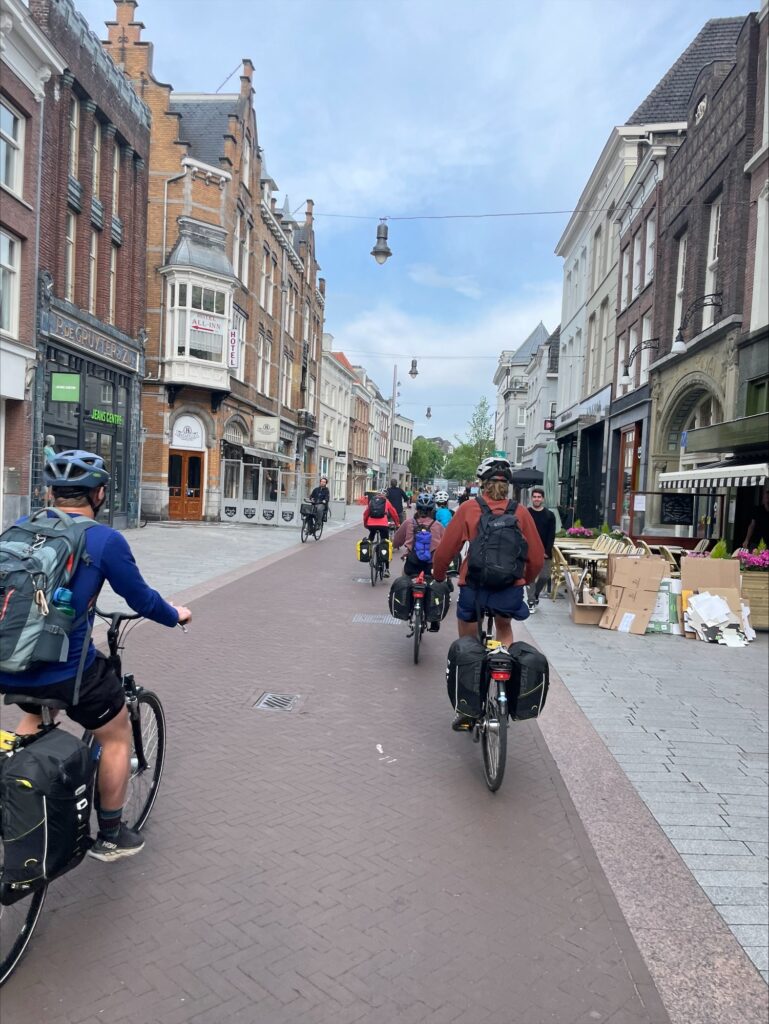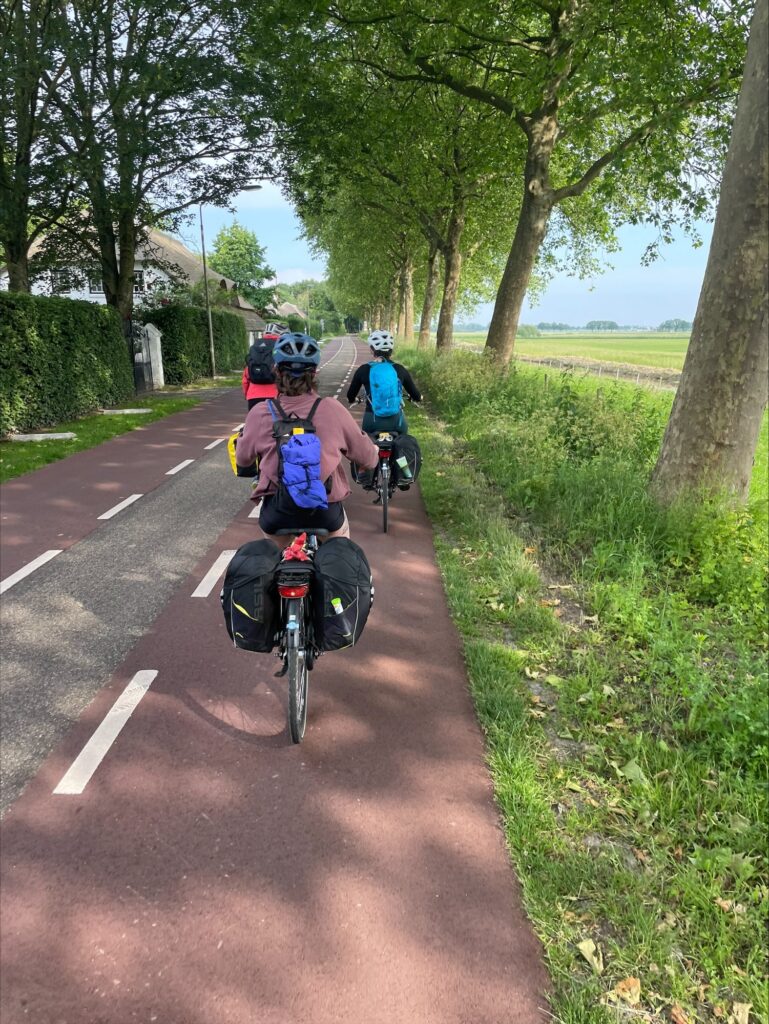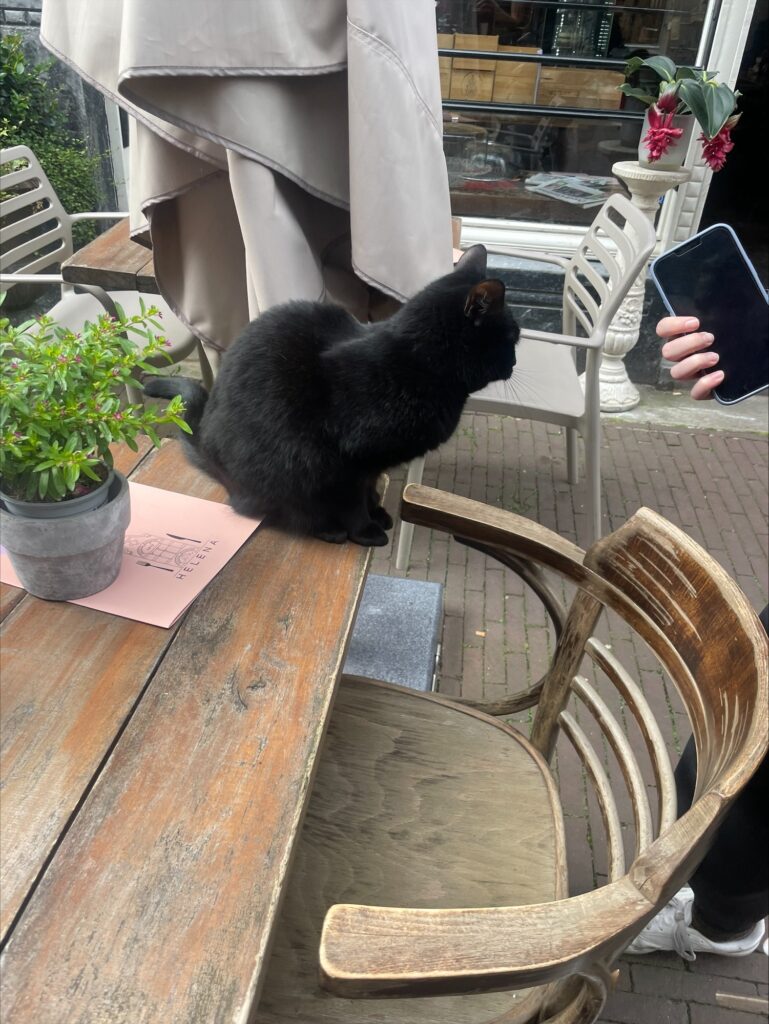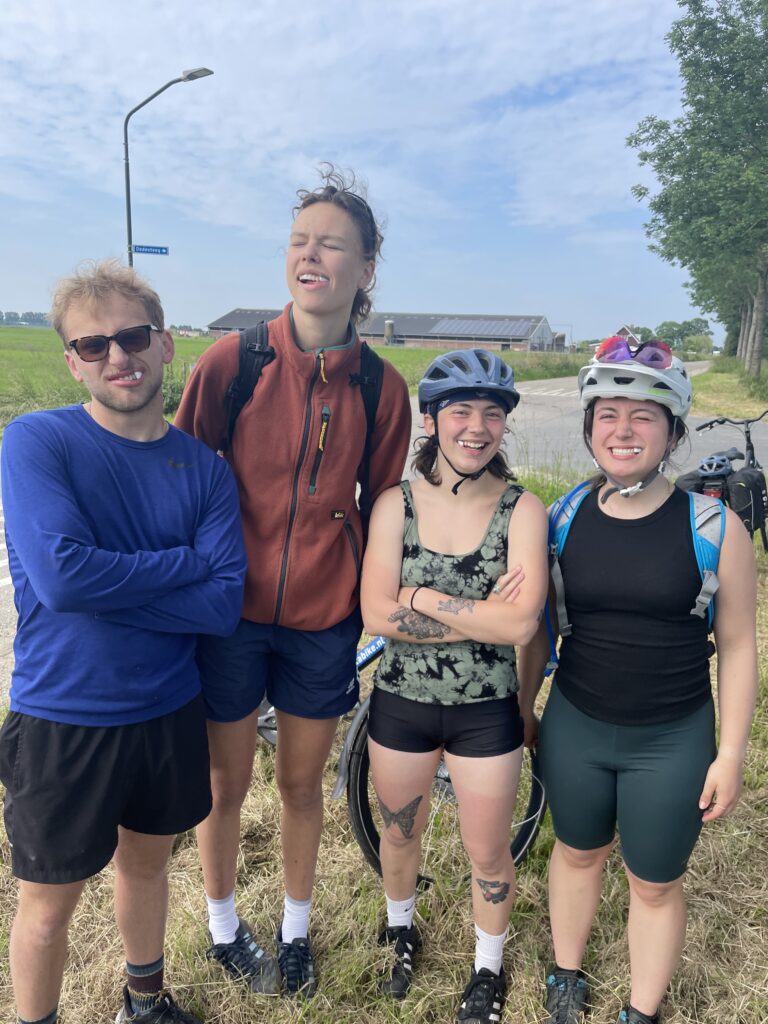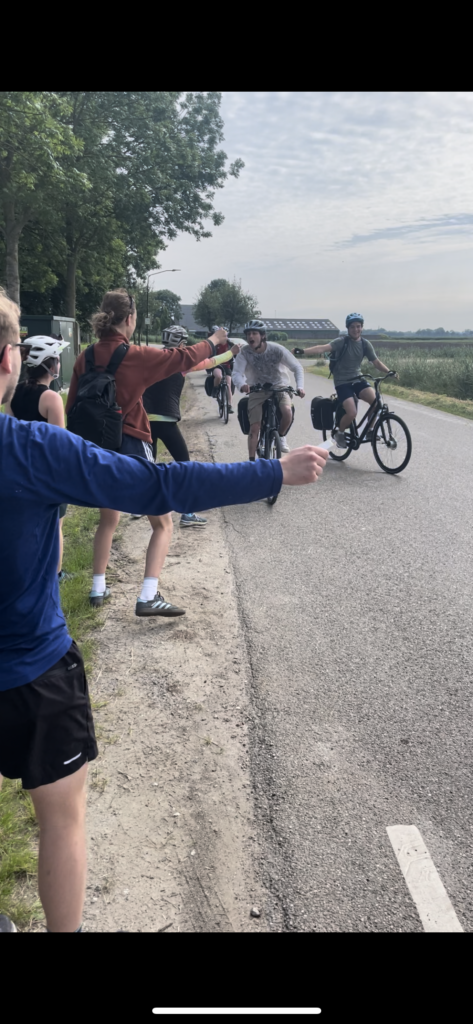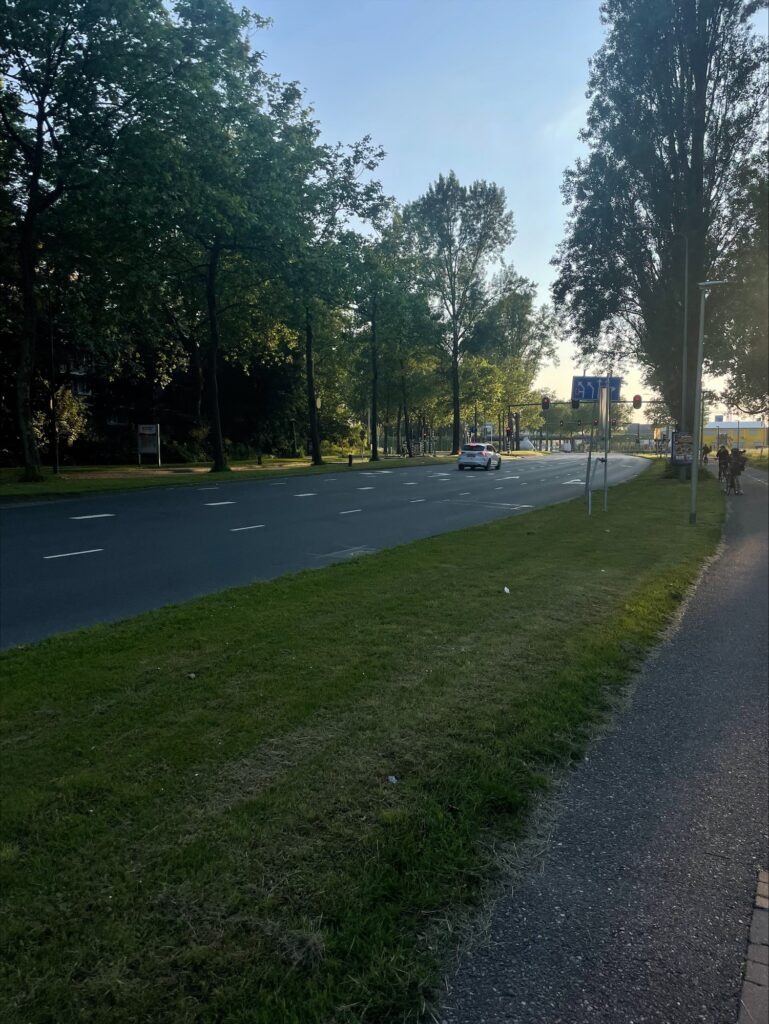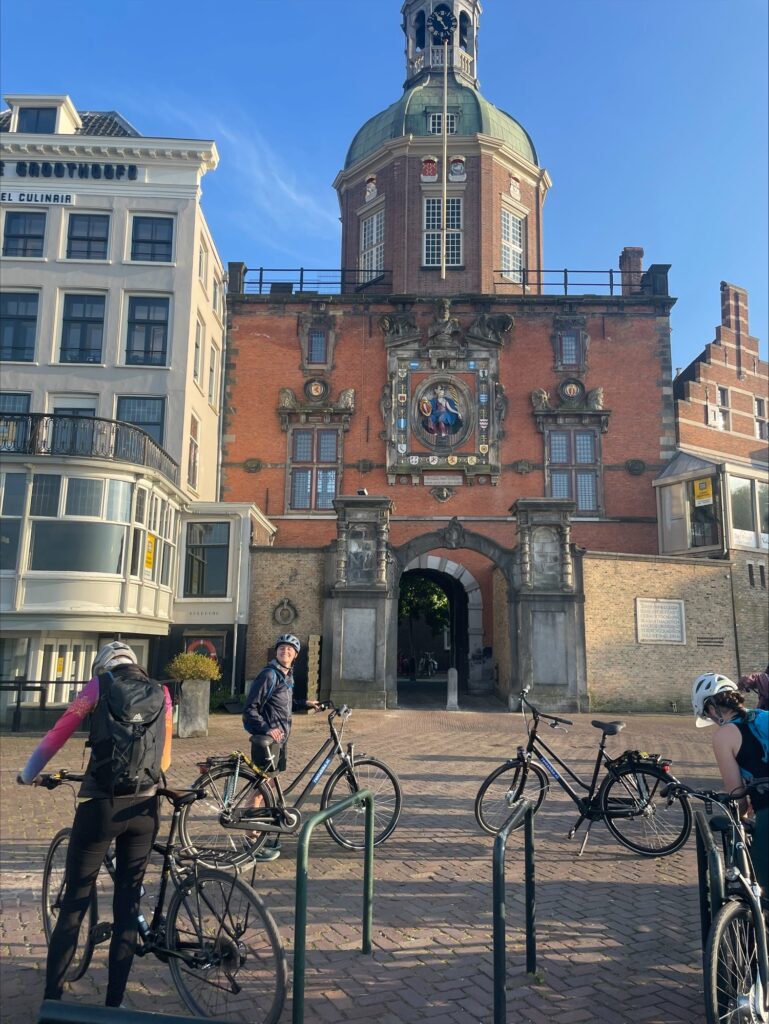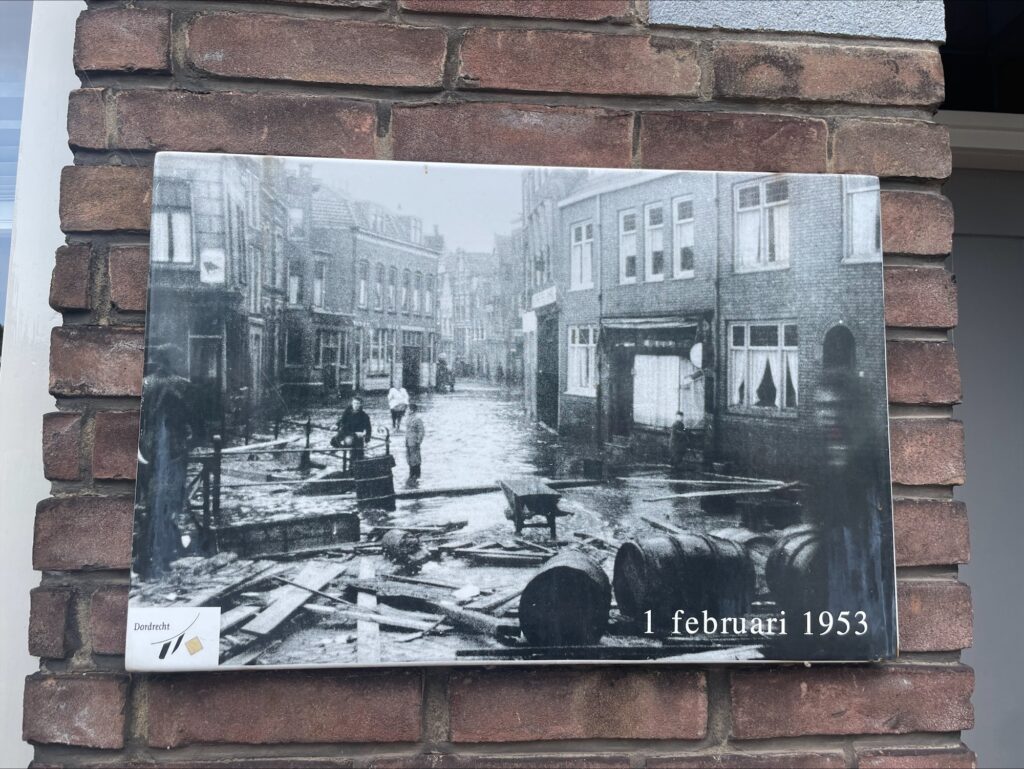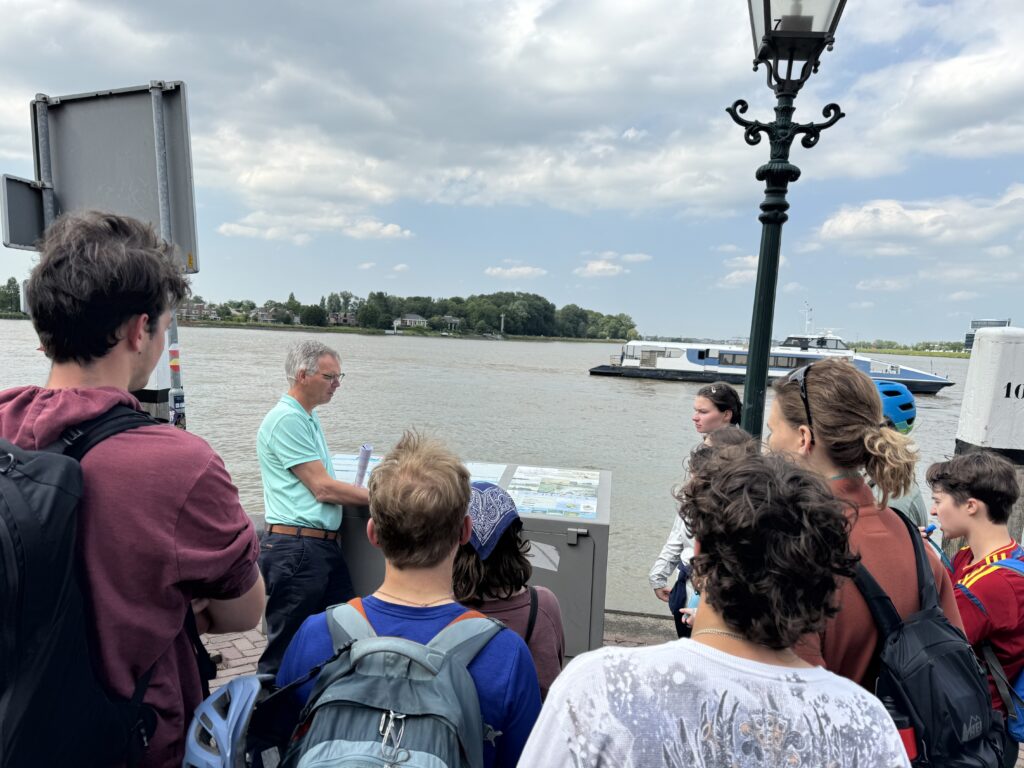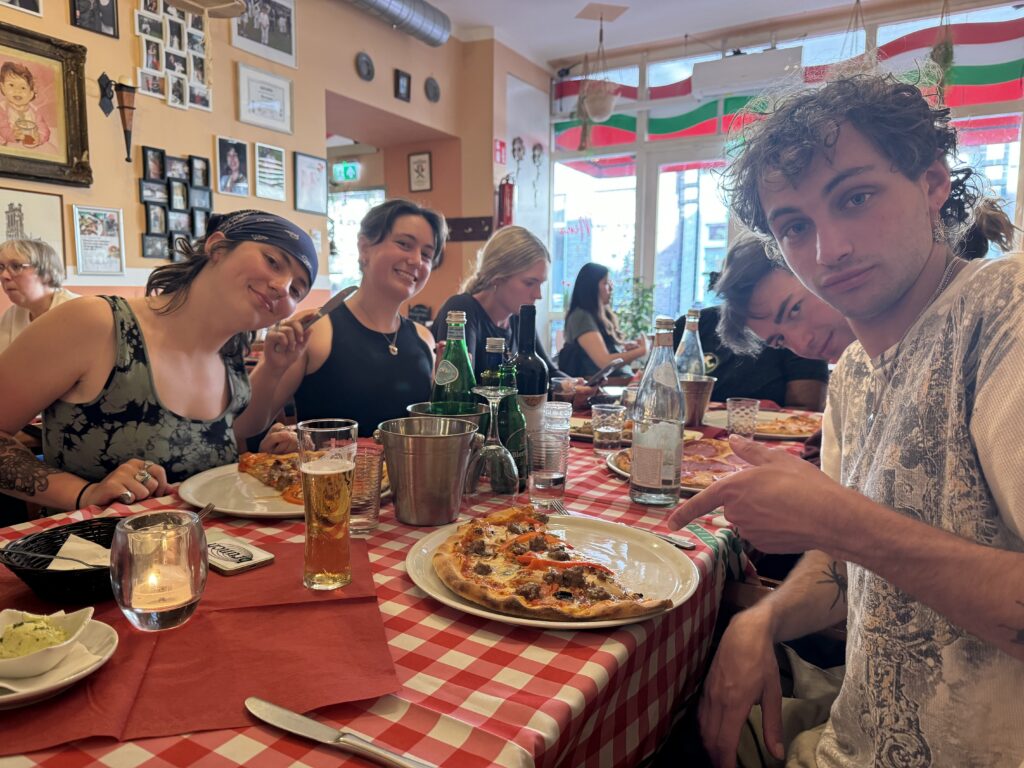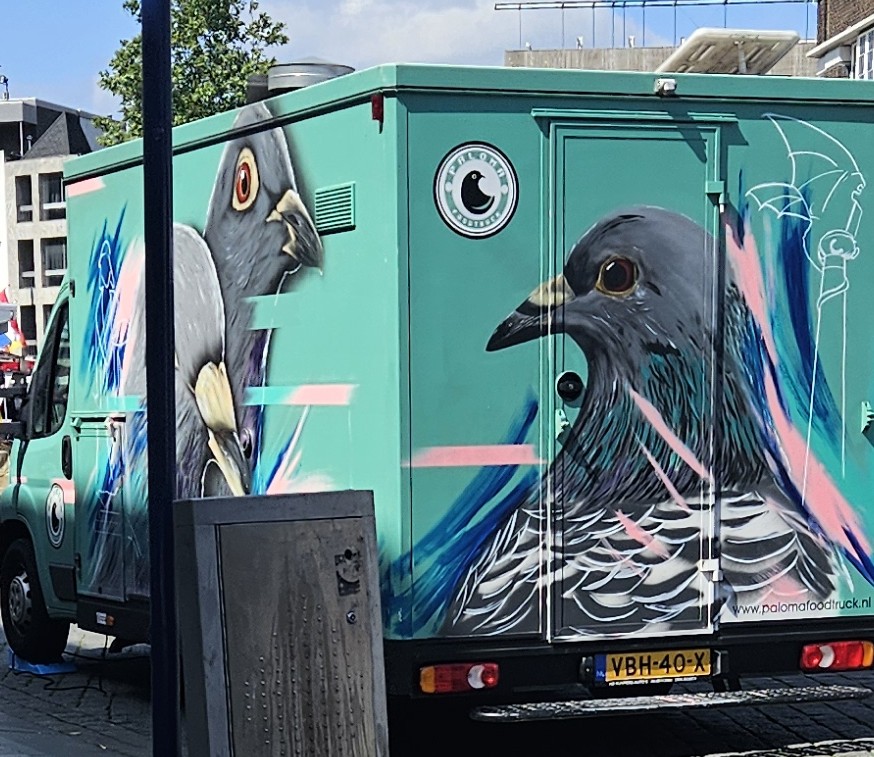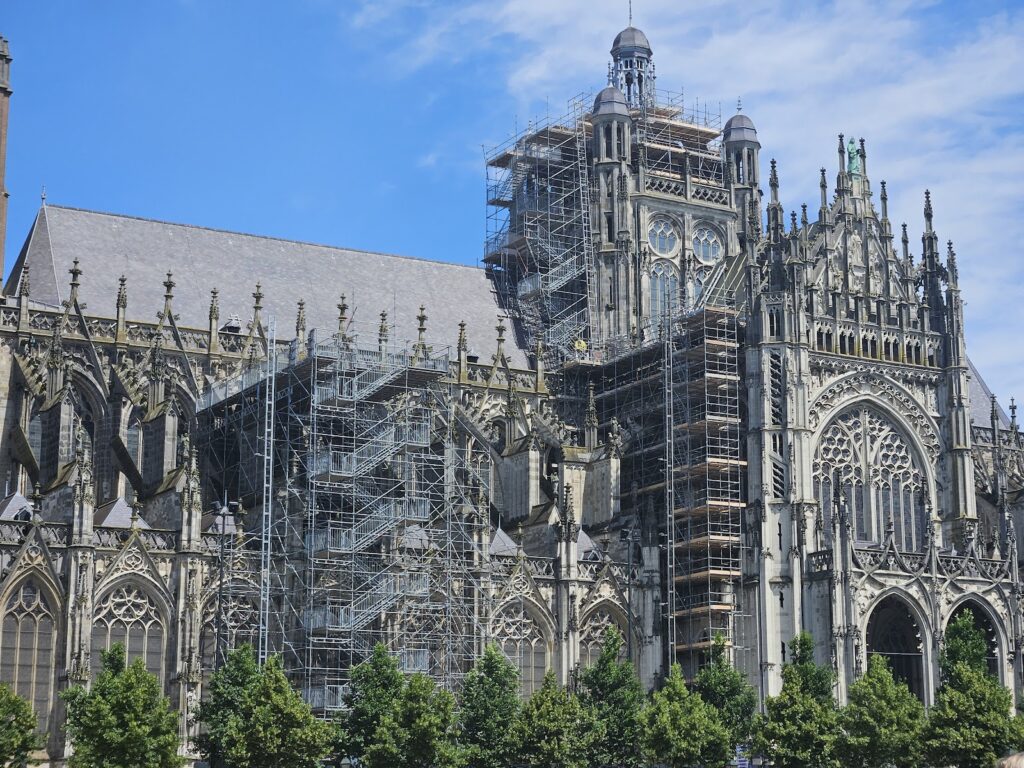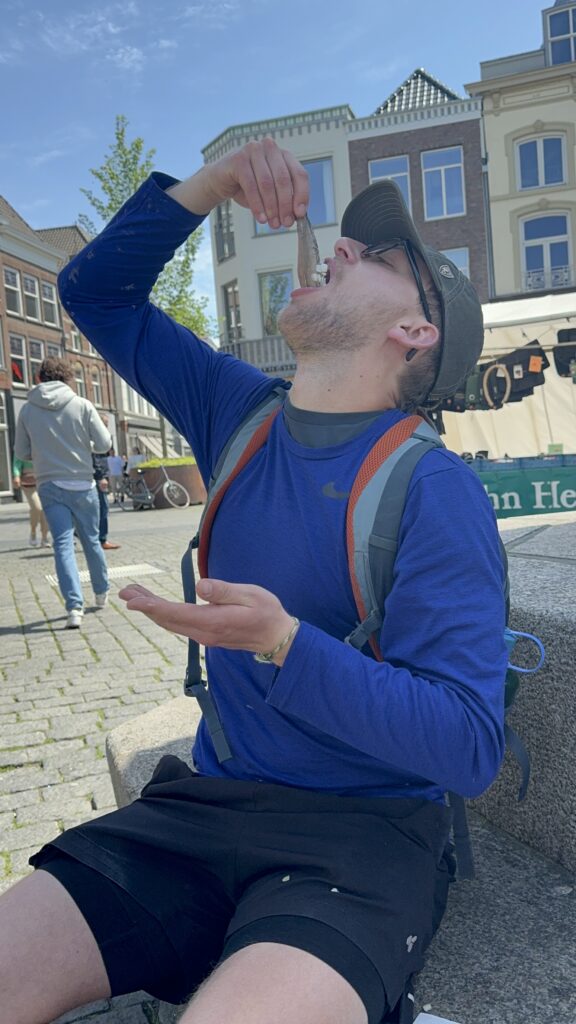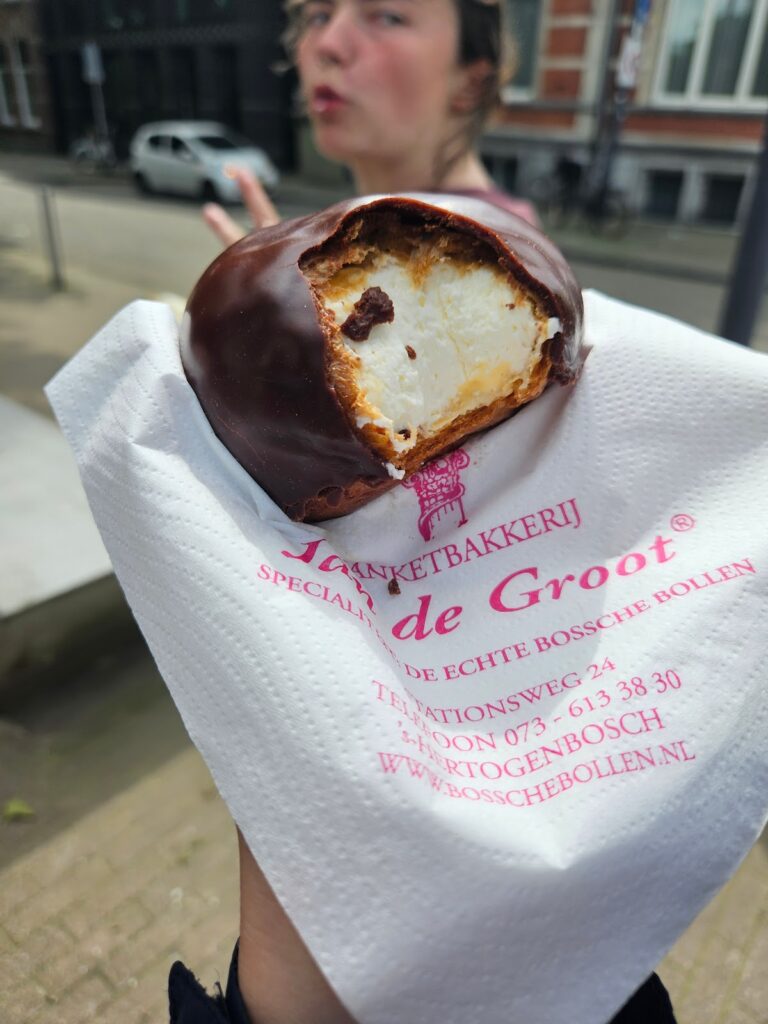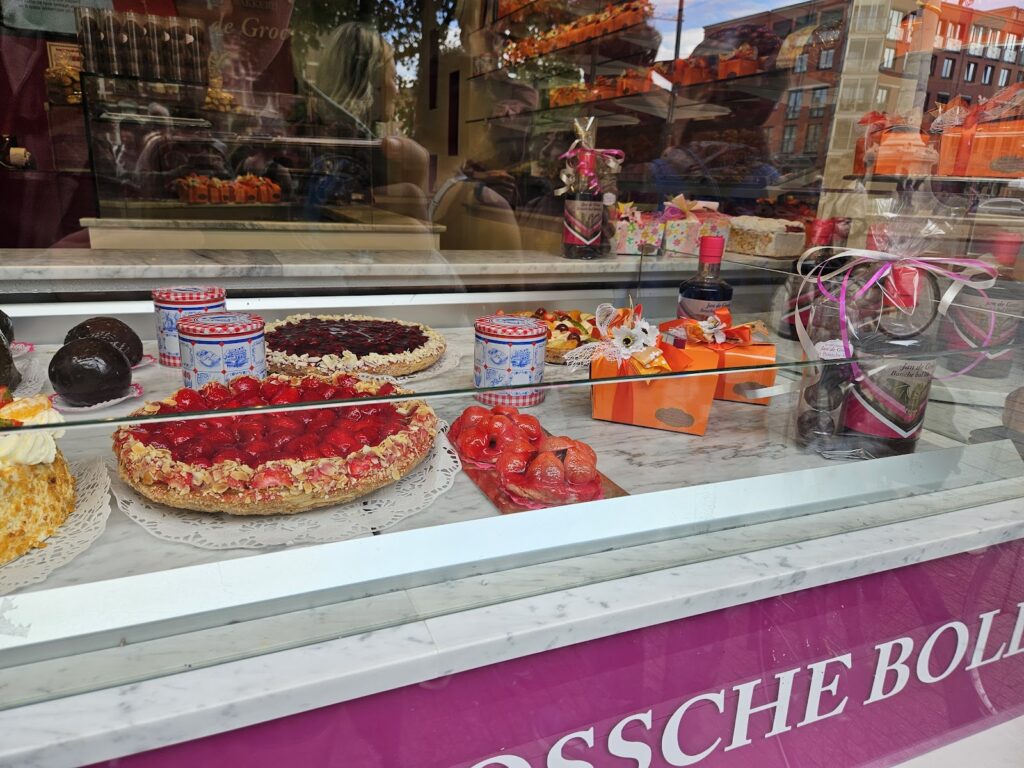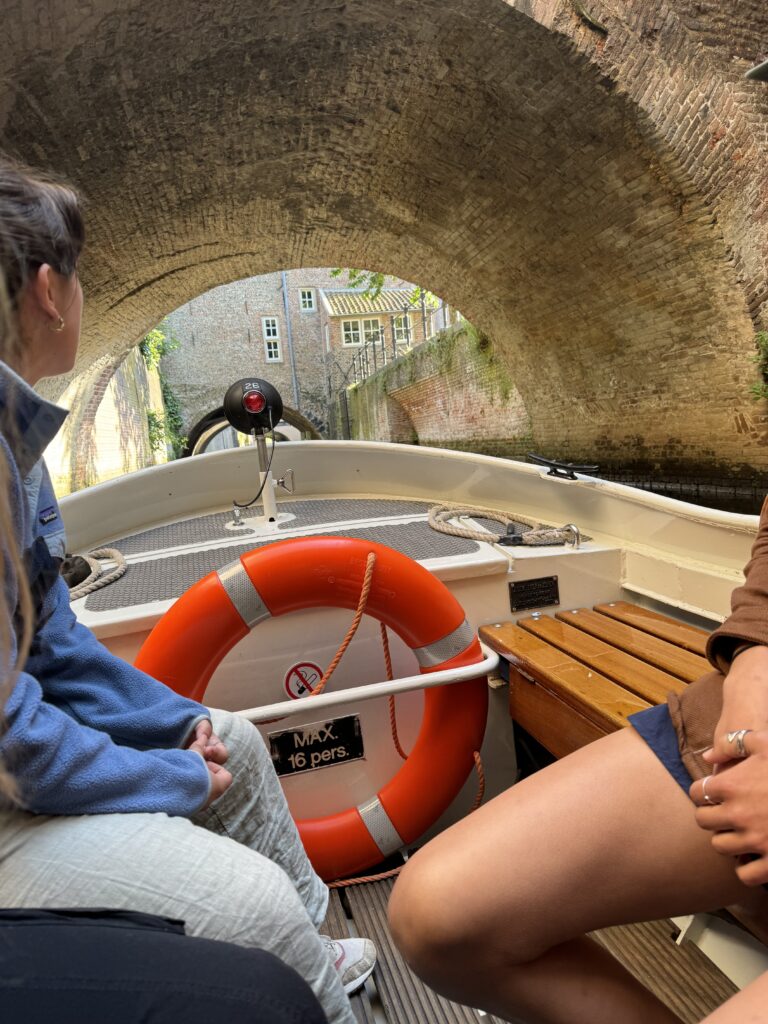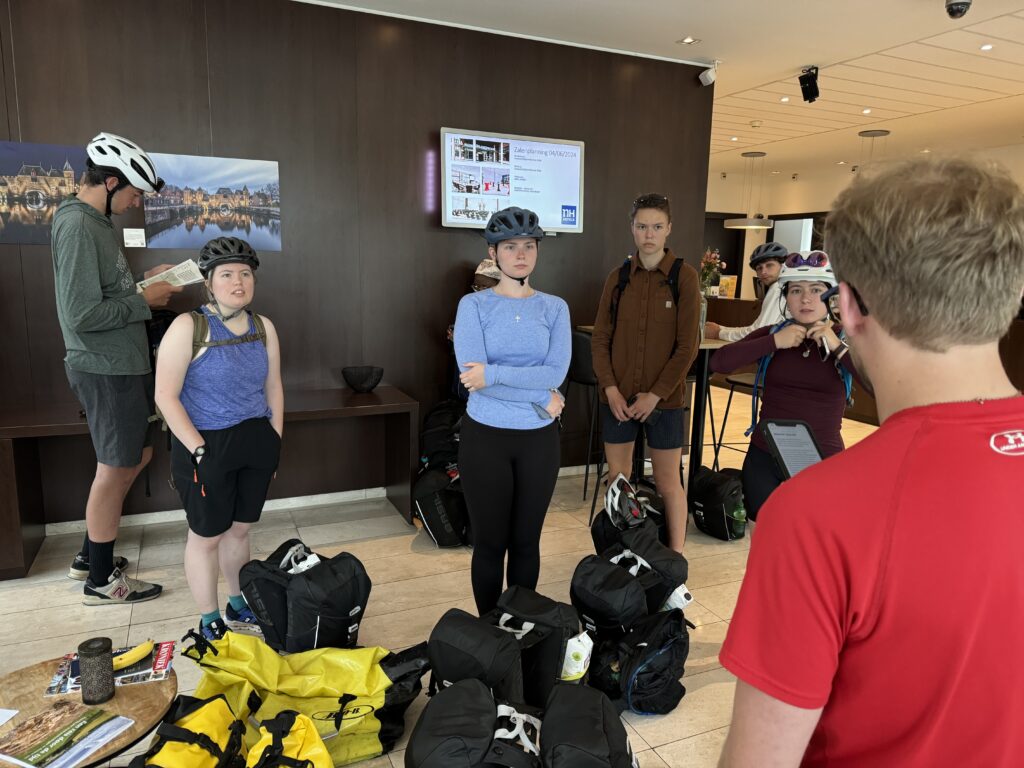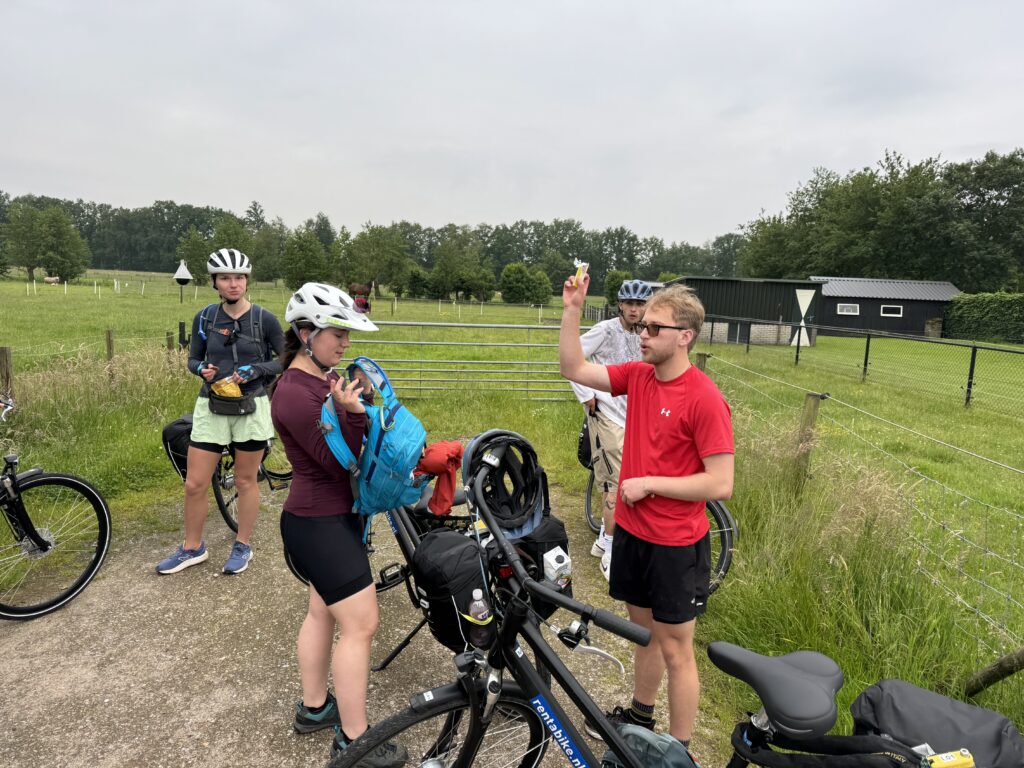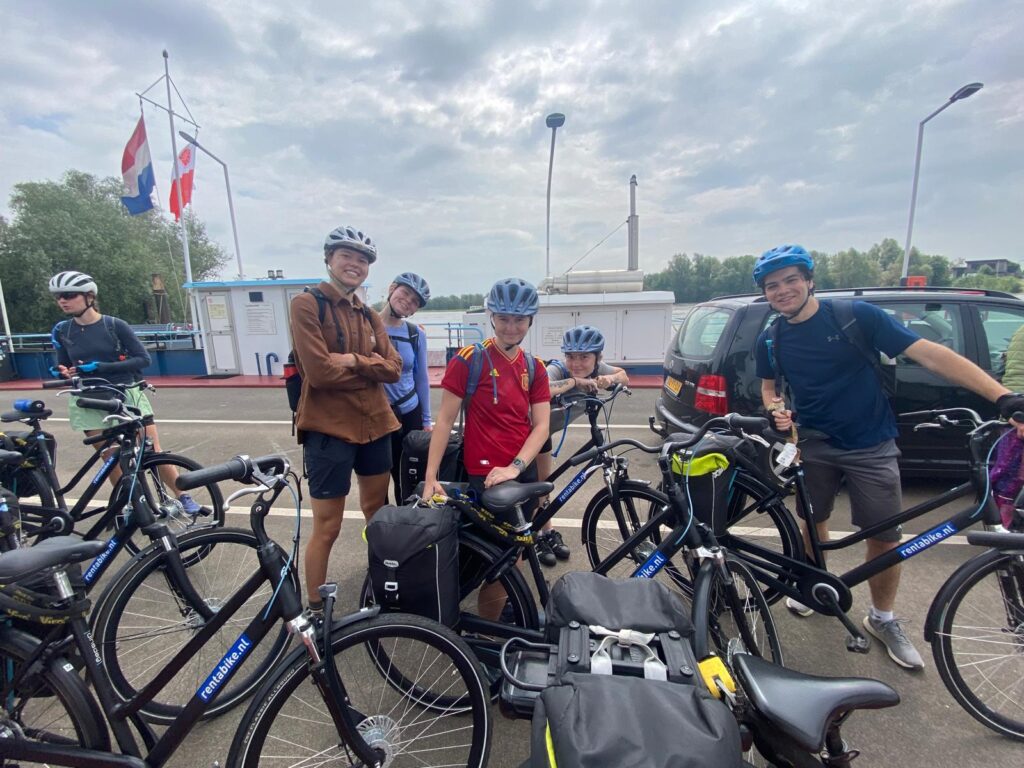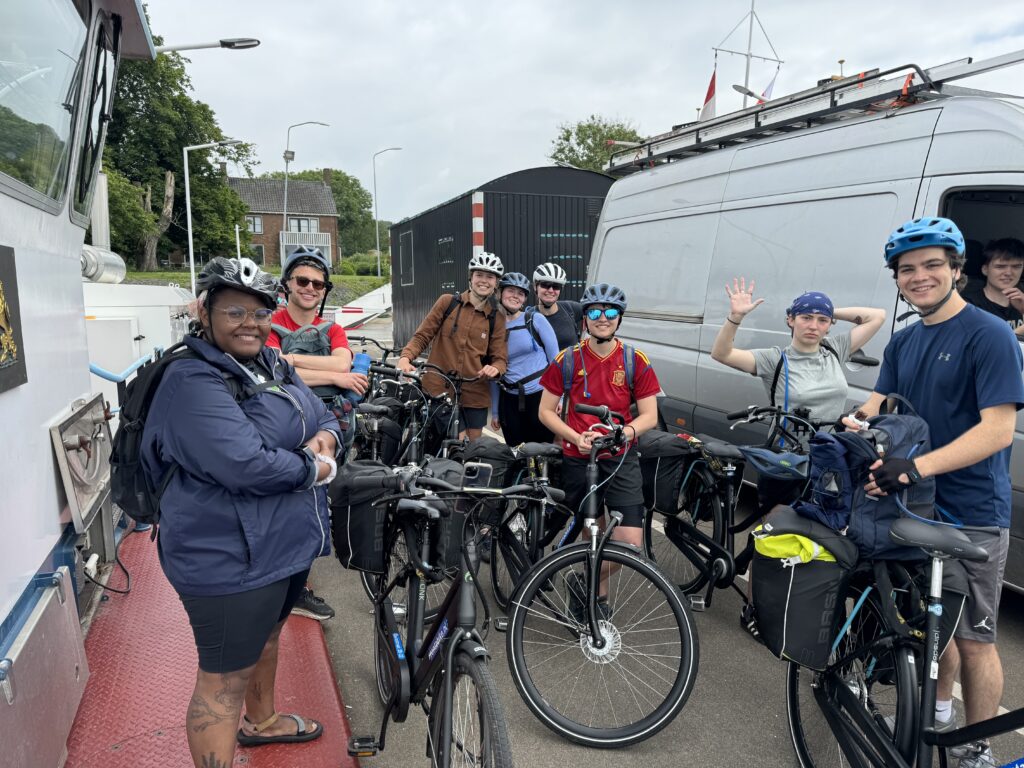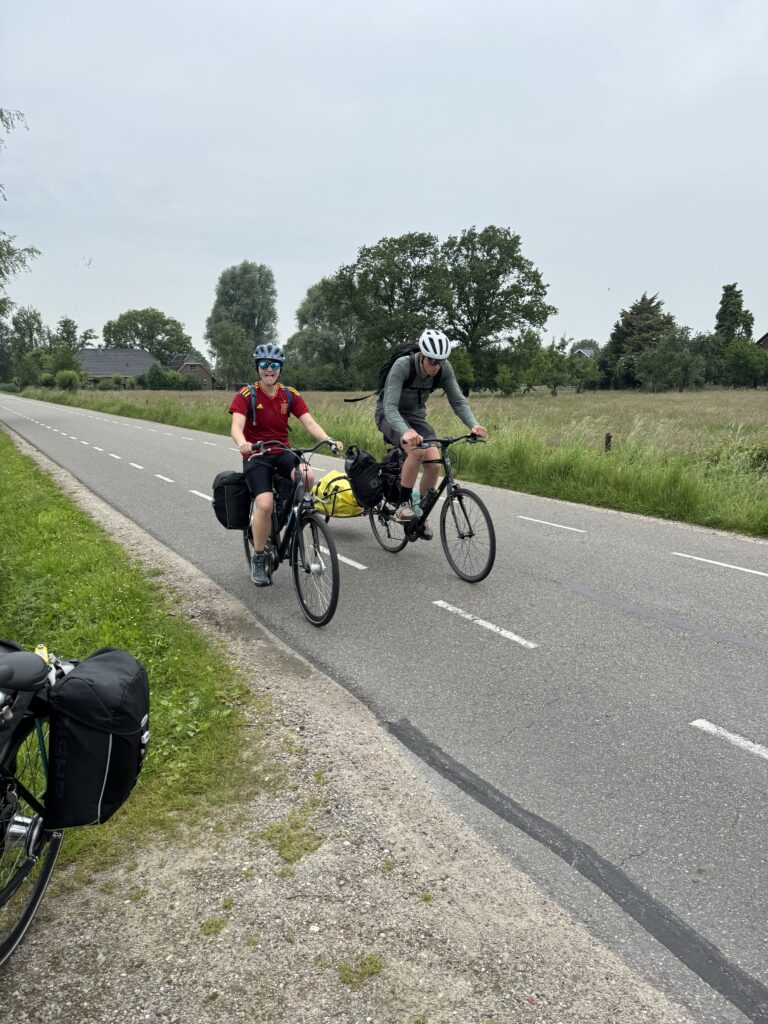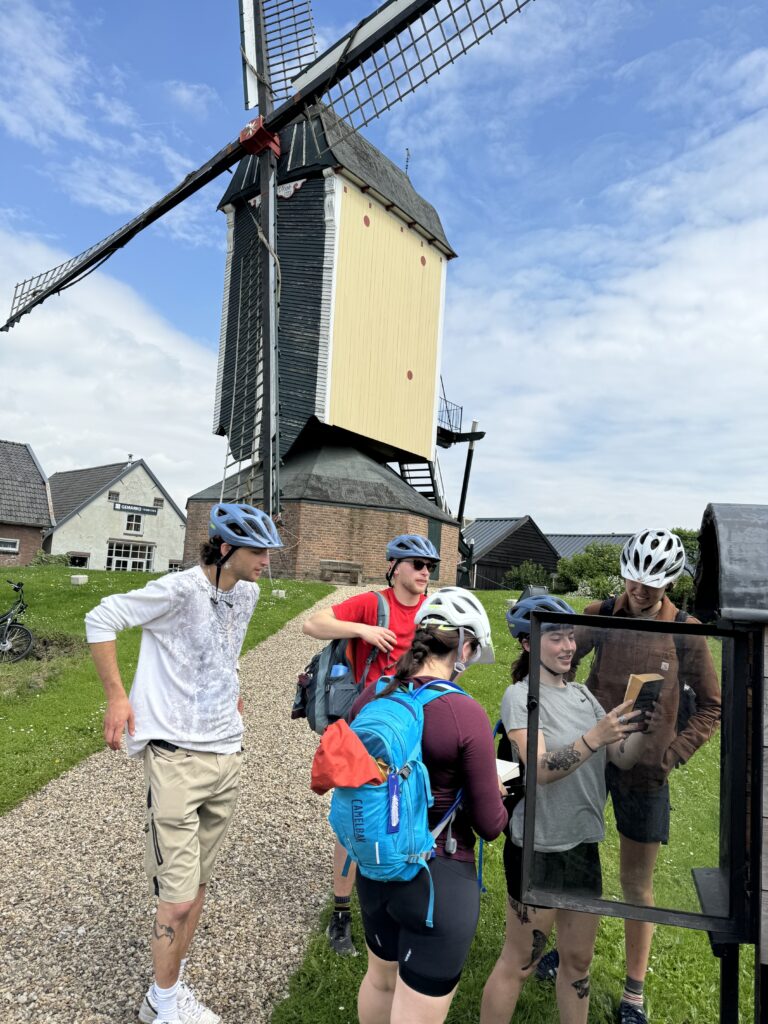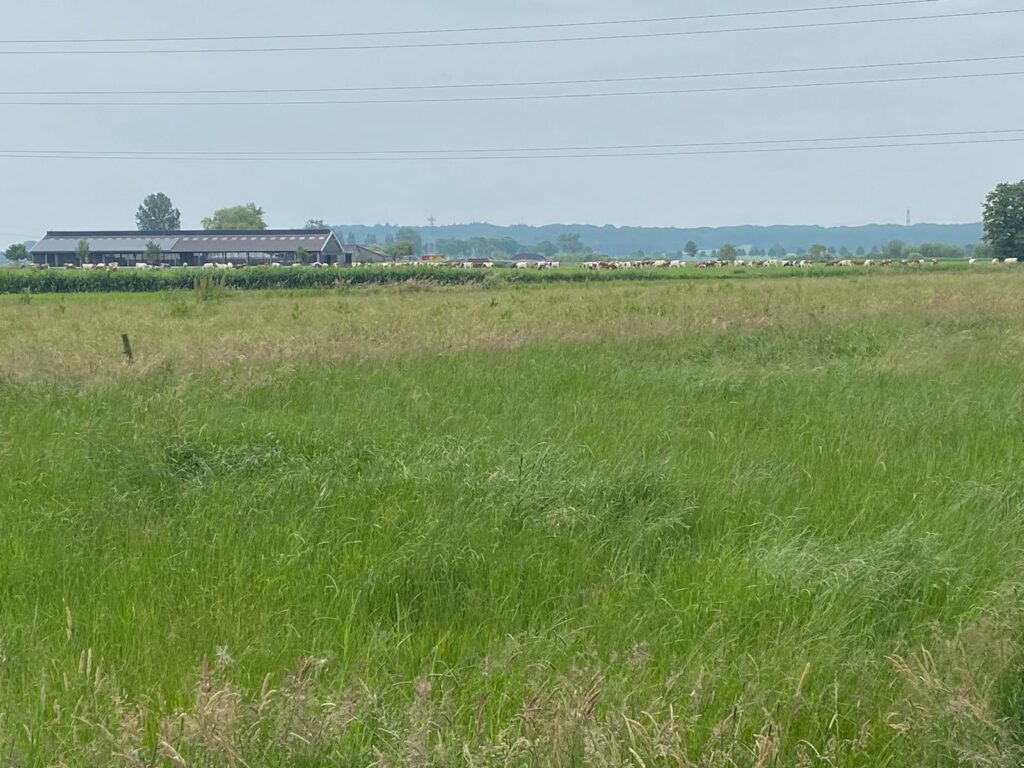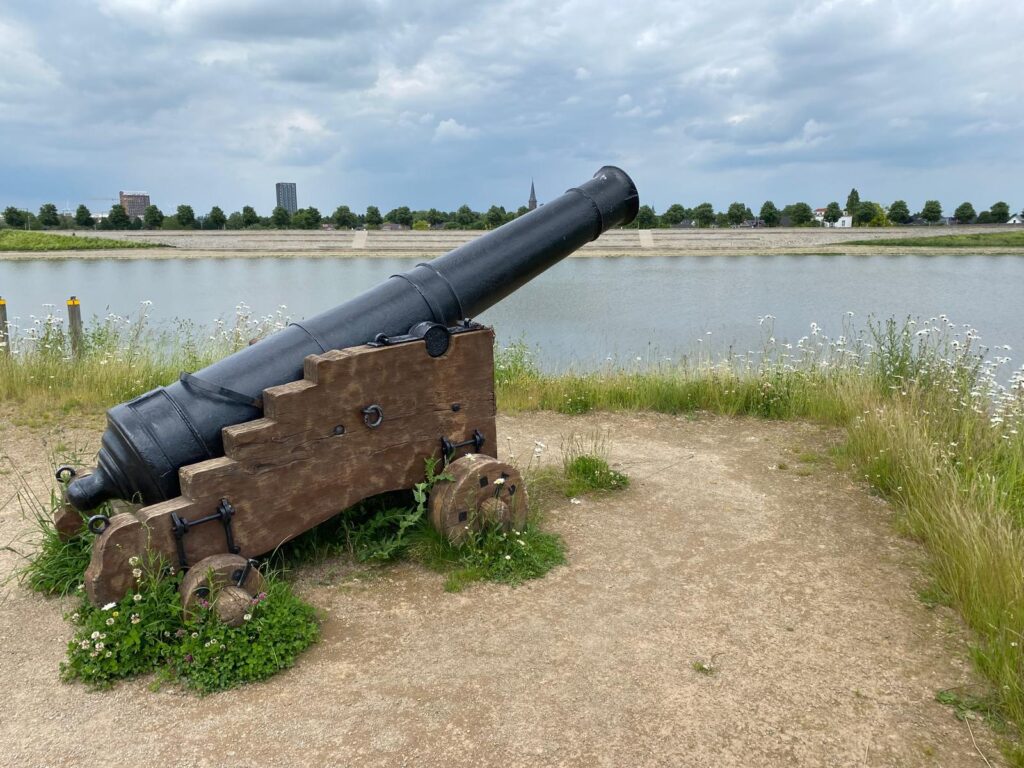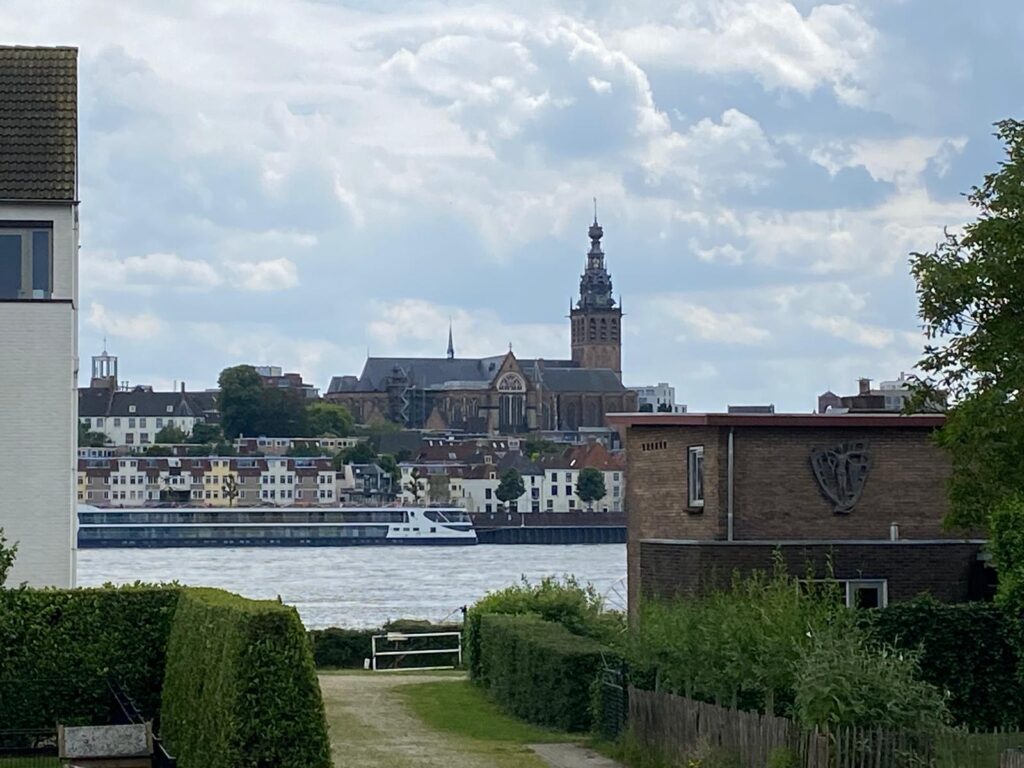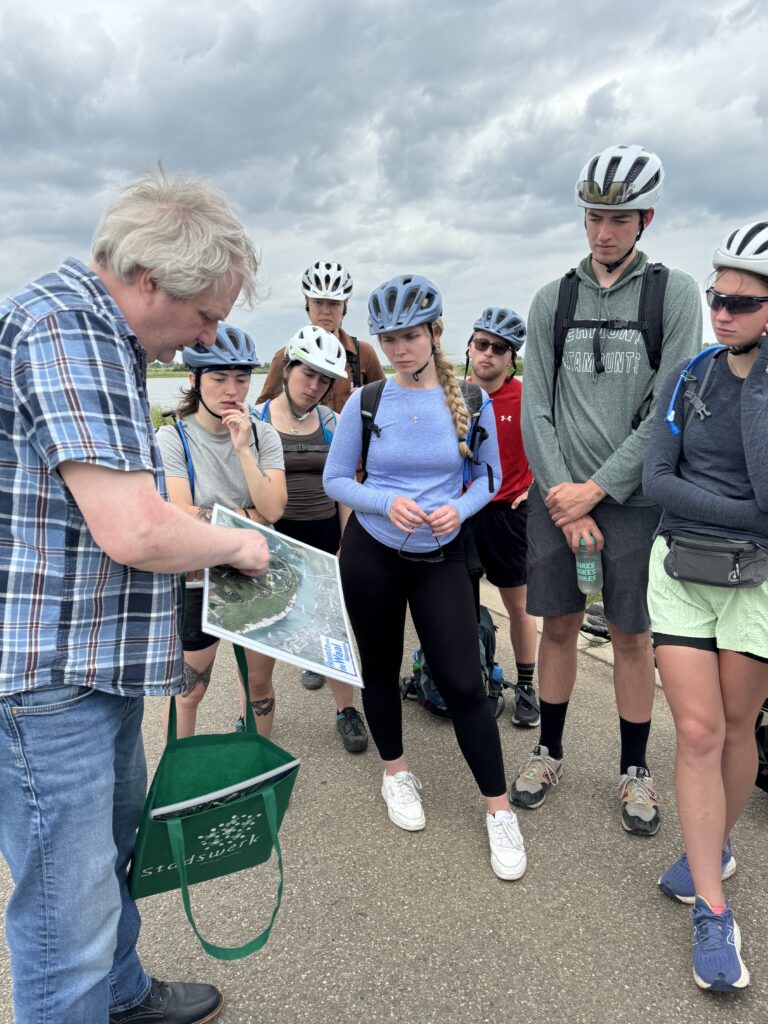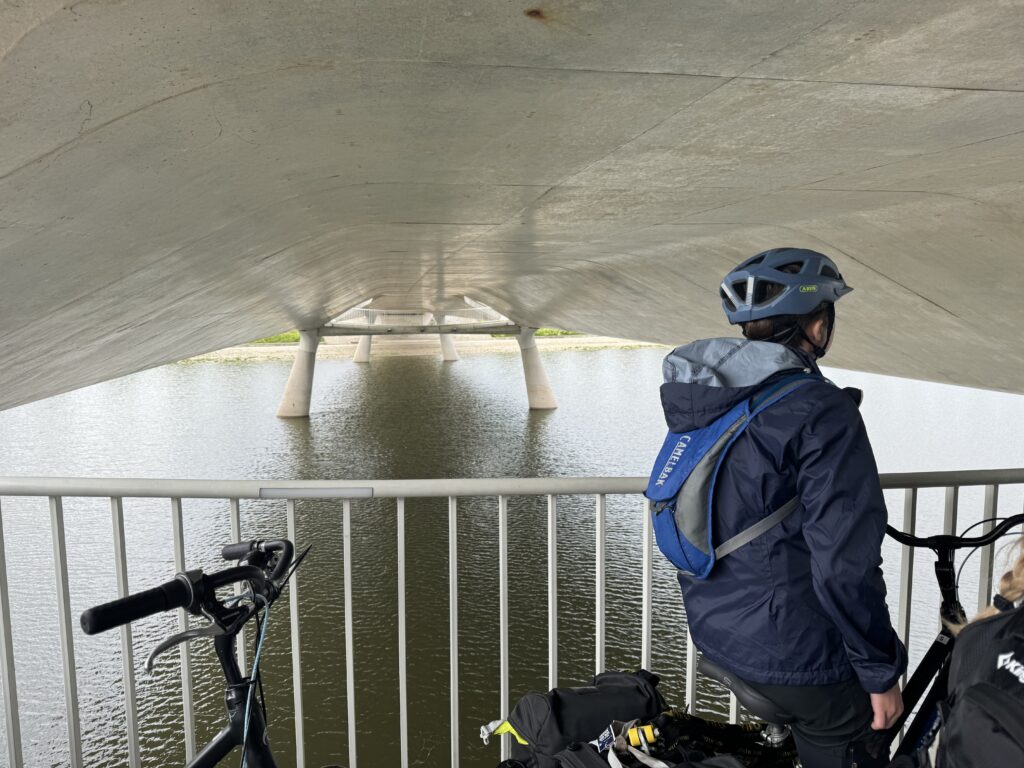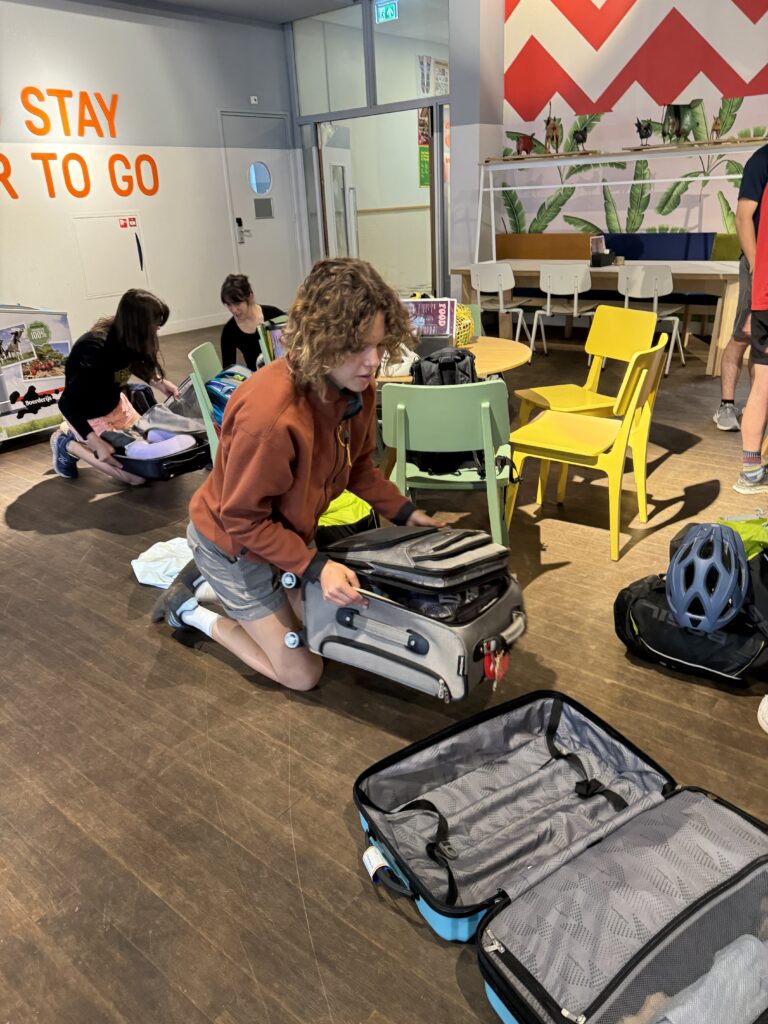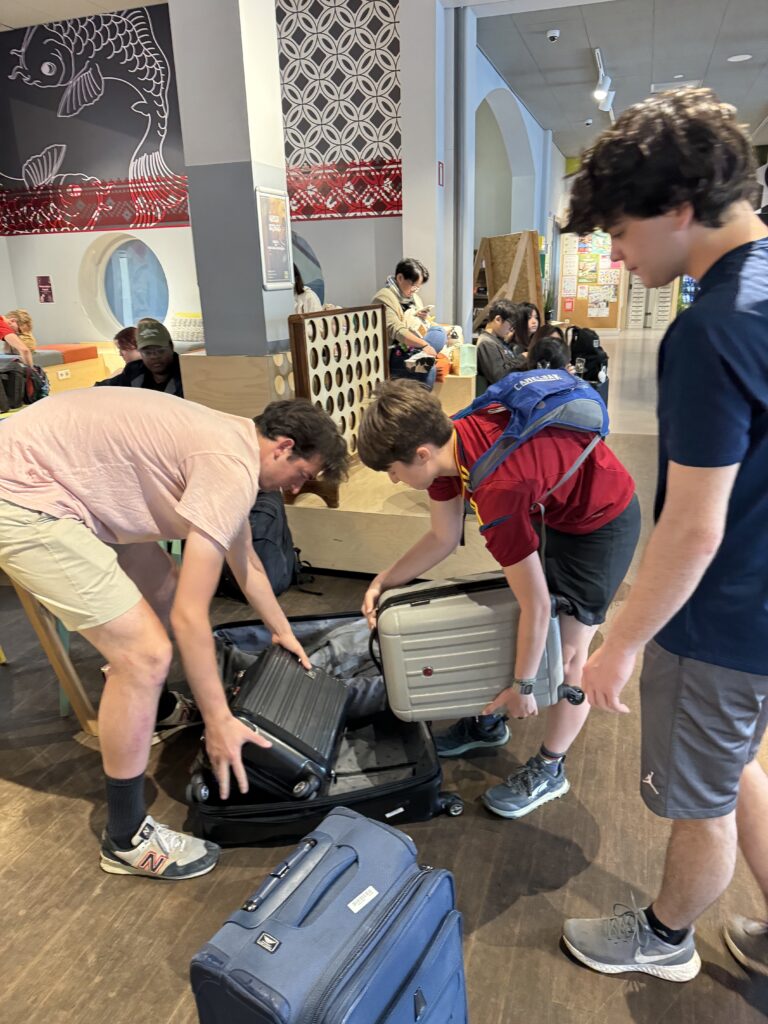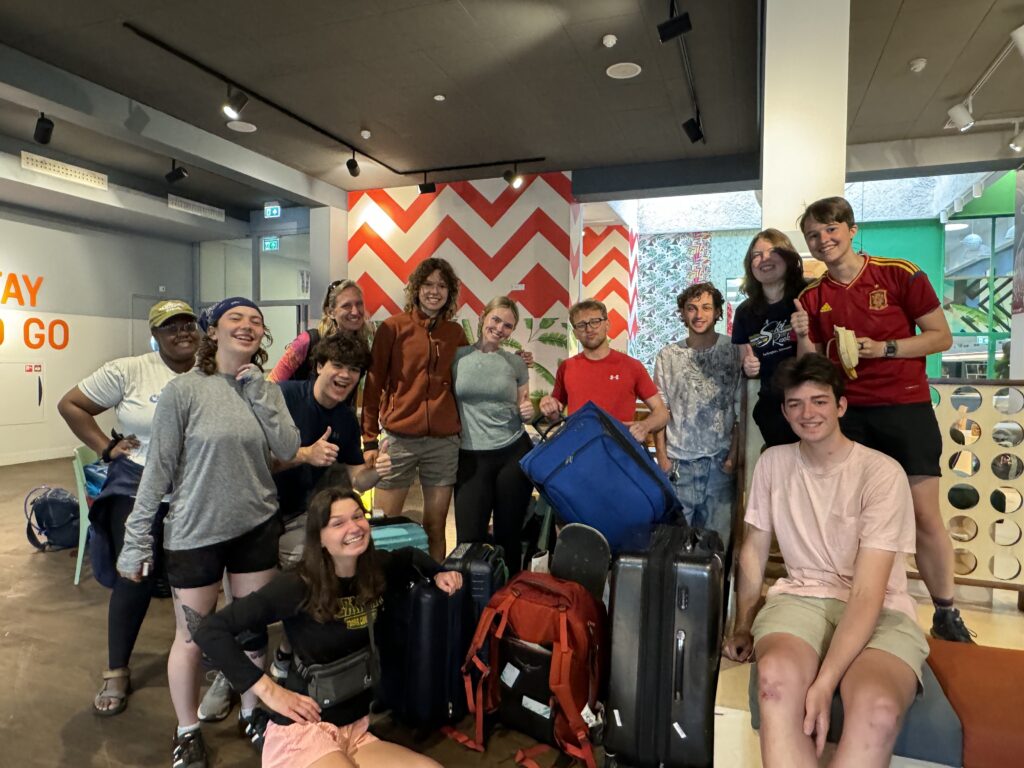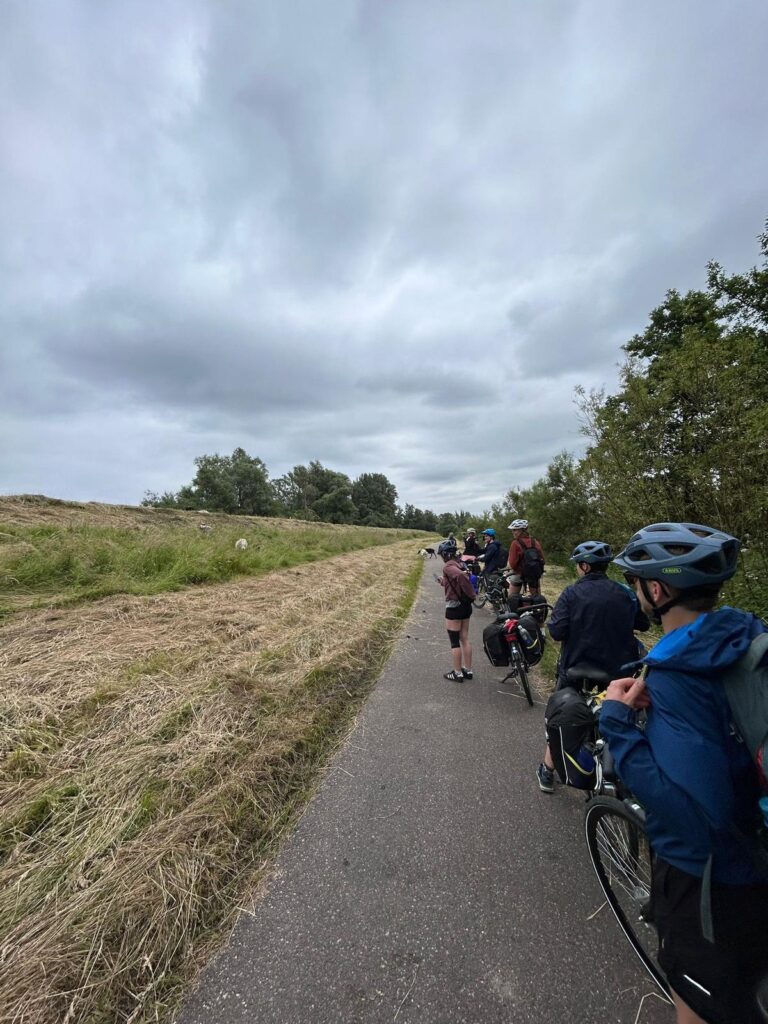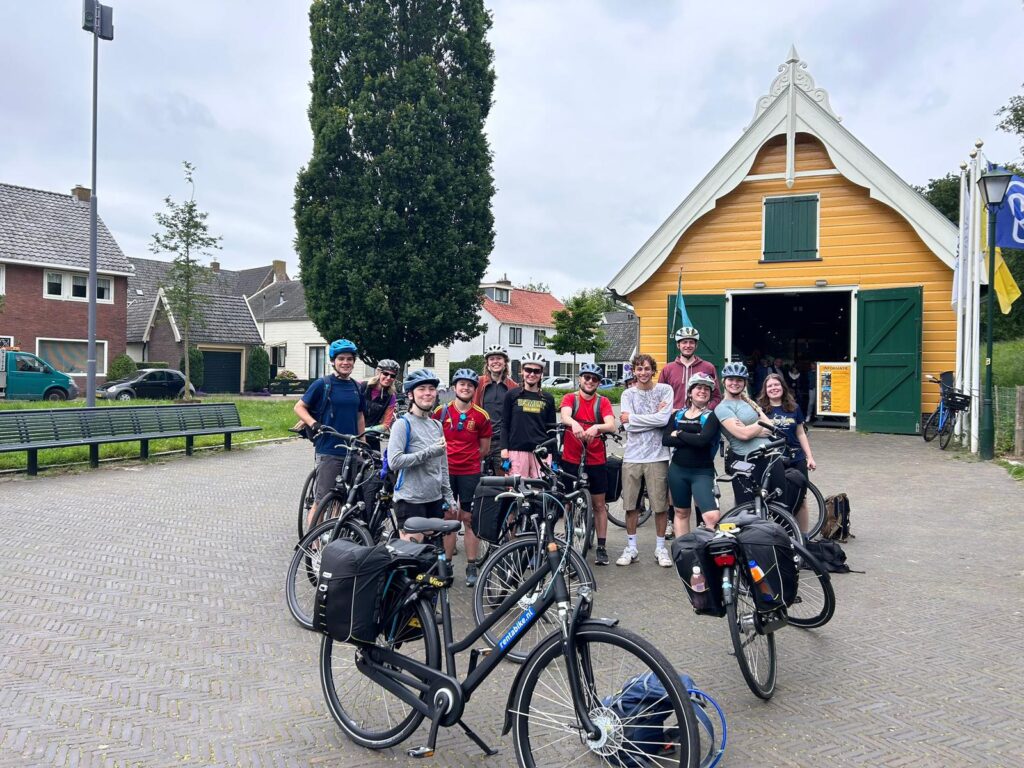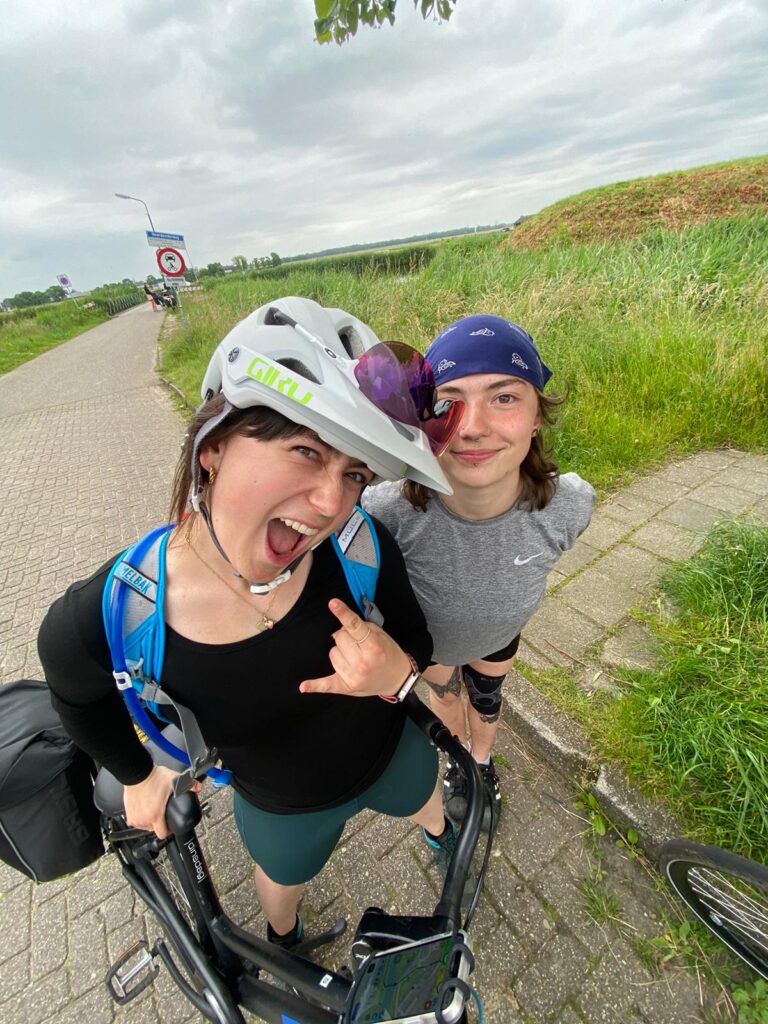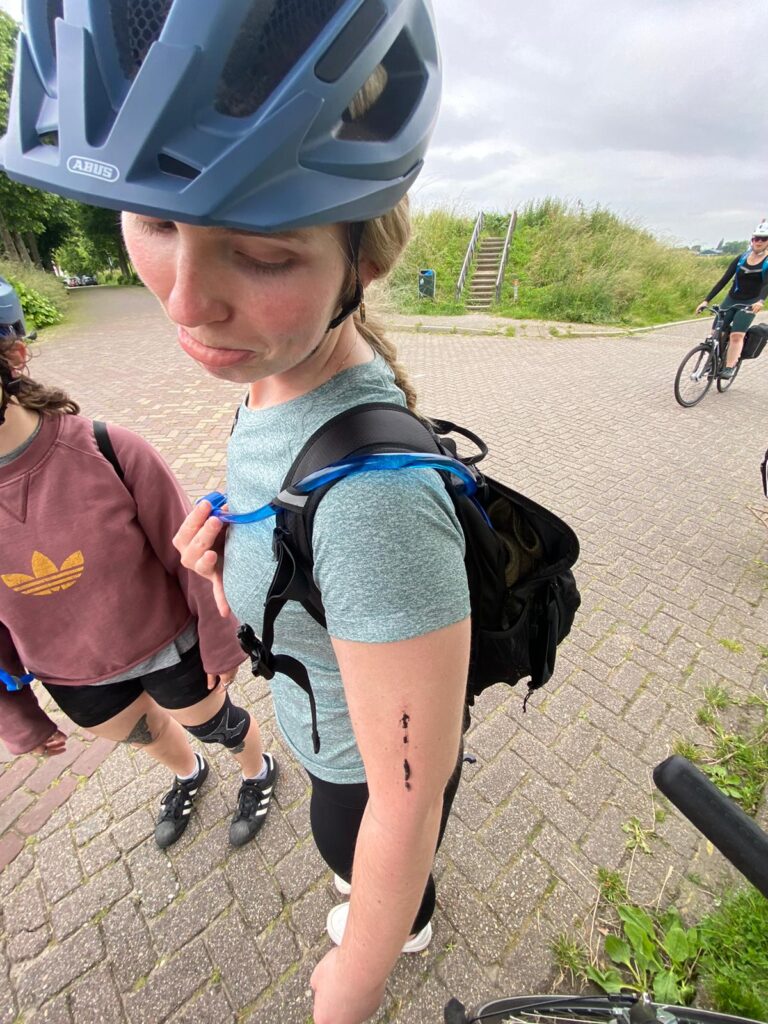June 12 and 13, 2024

I think we’re all amazed at how quickly the last two weeks have gone and at the same time it felt like it was a year. When we lined up for the photo above on the first day, we had no idea of some of the adventures to come. I’m so proud of all of the students for facing challenges we encountered with grit and teamwork. From luggage storage puzzles, to flat tires, head winds, fences, gale force winds and rain (we didn’t bike that day), tight schedules, and aching bodies, the students kept at it with laughter and determination. In total, we pedaled about 435 km or 270 miles. We had 10 flat tires. Lukas spotted 31 pick up trucks and Peter saw 19 cats along the way.

Our last day of biking on Wednesday took us back past Schiphol Airport and into Amsterdam. We successfully completed our loop within the Netherlands and pedaled into the city confidently. There was even time for a bit of play along the way.
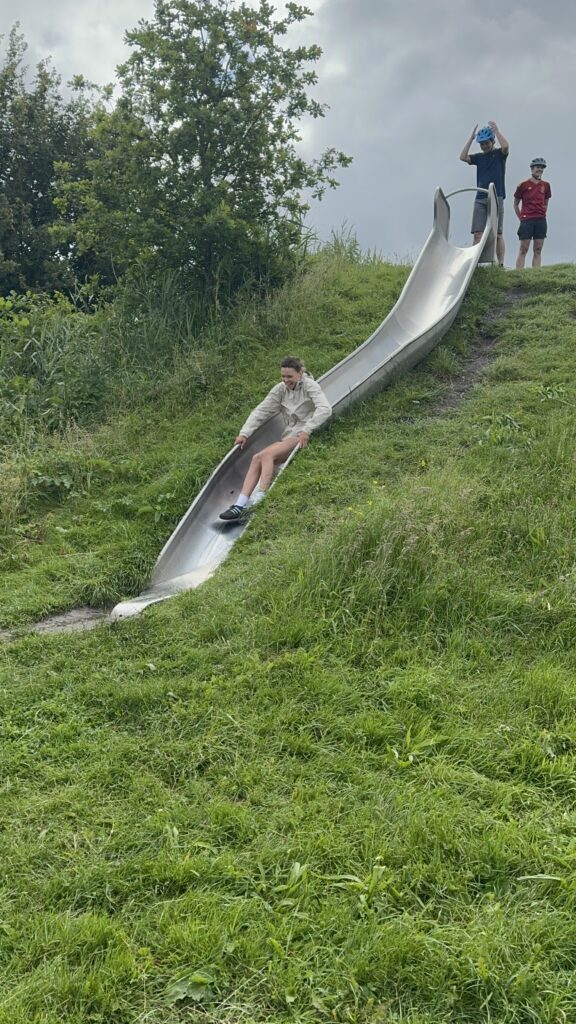
The professionals and community members who shared their time and knowledge with us were simply the best. The knowledge people shared ranged the social impacts of flooding to benefits to human safety through flood control, nature-based and engineered solutions to flood management. In the Netherlands, we saw projects that were primarily about human safety and protection of buildings and businesses. We also saw others that considered multiple uses of the land, from habitat for birds, to space for agricultural grazing and for recreation. In Germany, we learned about the impacts as well as response and ongoing recovery from the summer 2021 floods. The students’ personal experiences with flooding and flood recovery provided insights and comparisons to the practices and situations in the Netherlands and Germany.
Our last tour of the course was one in which we were able to learn about practices being implemented in Amsterdam in an effort for the city to become more sustainable. These practices included neighborhoods heated with waste heat from a nearby factory to limited car presence in exchange for greater amounts of green space, to green roofs and solar panels.
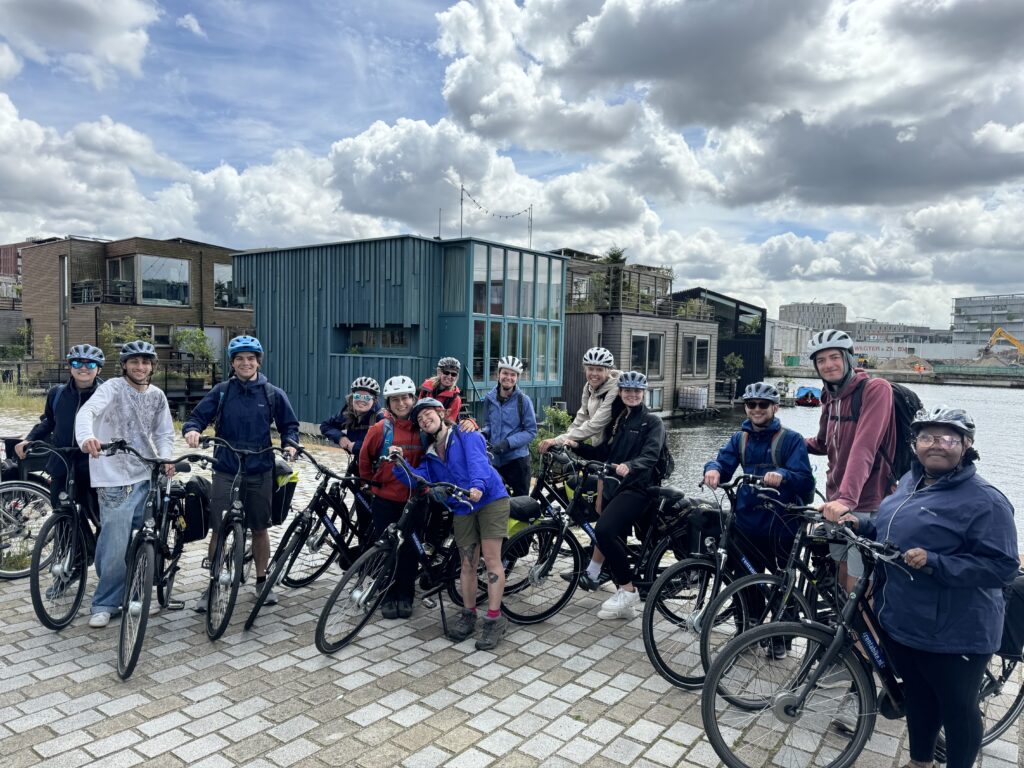
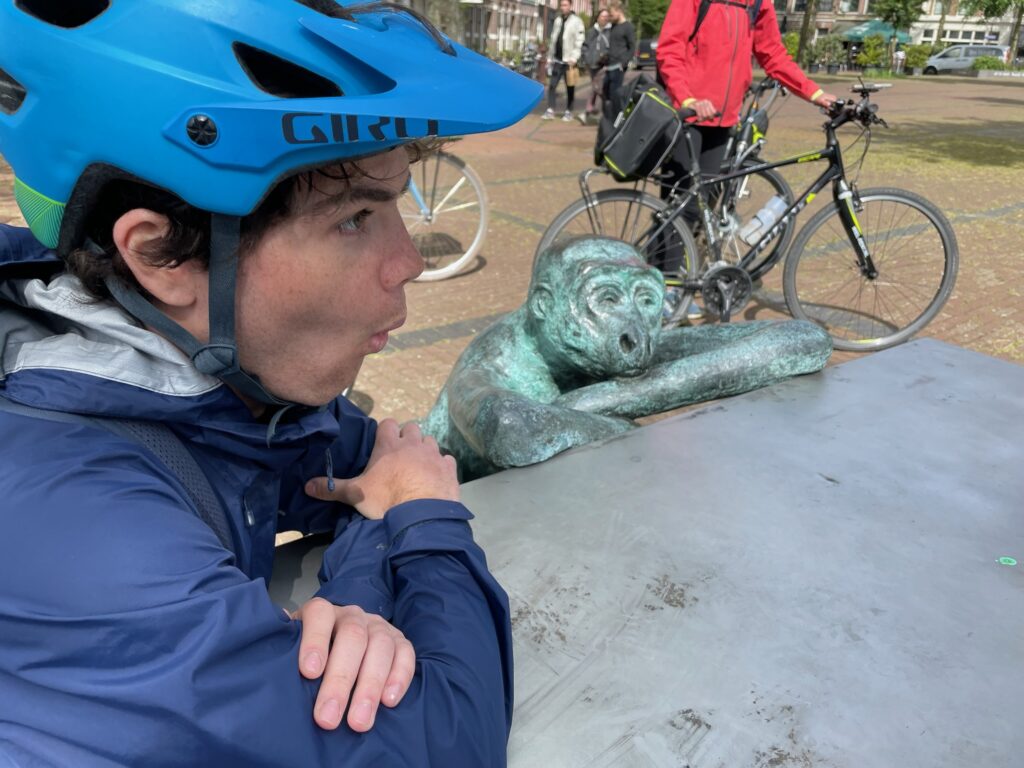
I am indebted to our teaching assistant Jess for all her hard work to keep things running smooth and everyone safe. We couldn’t have done it without her.
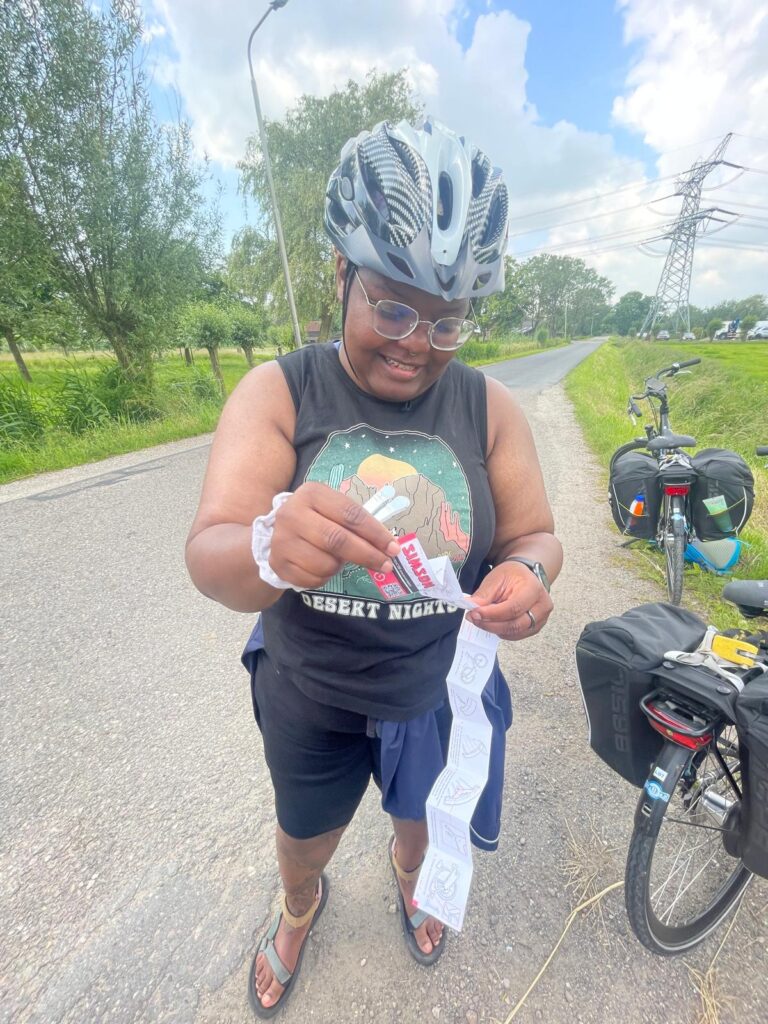
Most of us parted ways yesterday, leaving our Stayokay rooms and heading to Schiphol airport. I look forward to seeing the path each of the students follows through their college years and beyond. I hope that friendships made will last and that some of the knowledge learned will aid them in their lives and careers.

